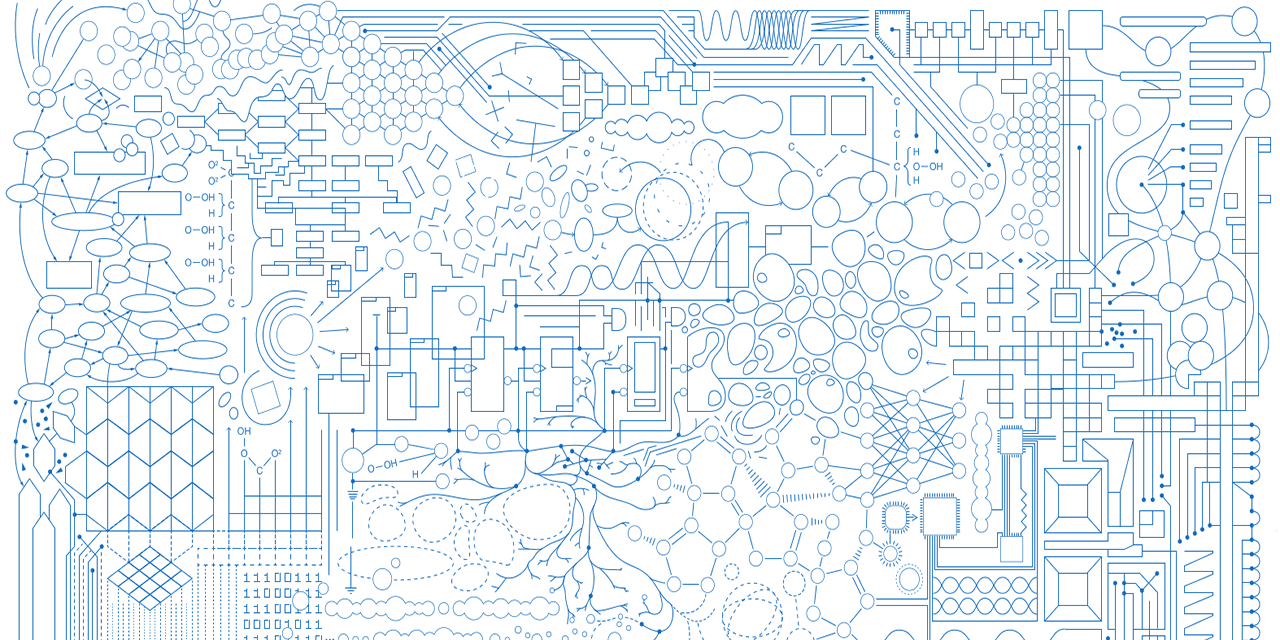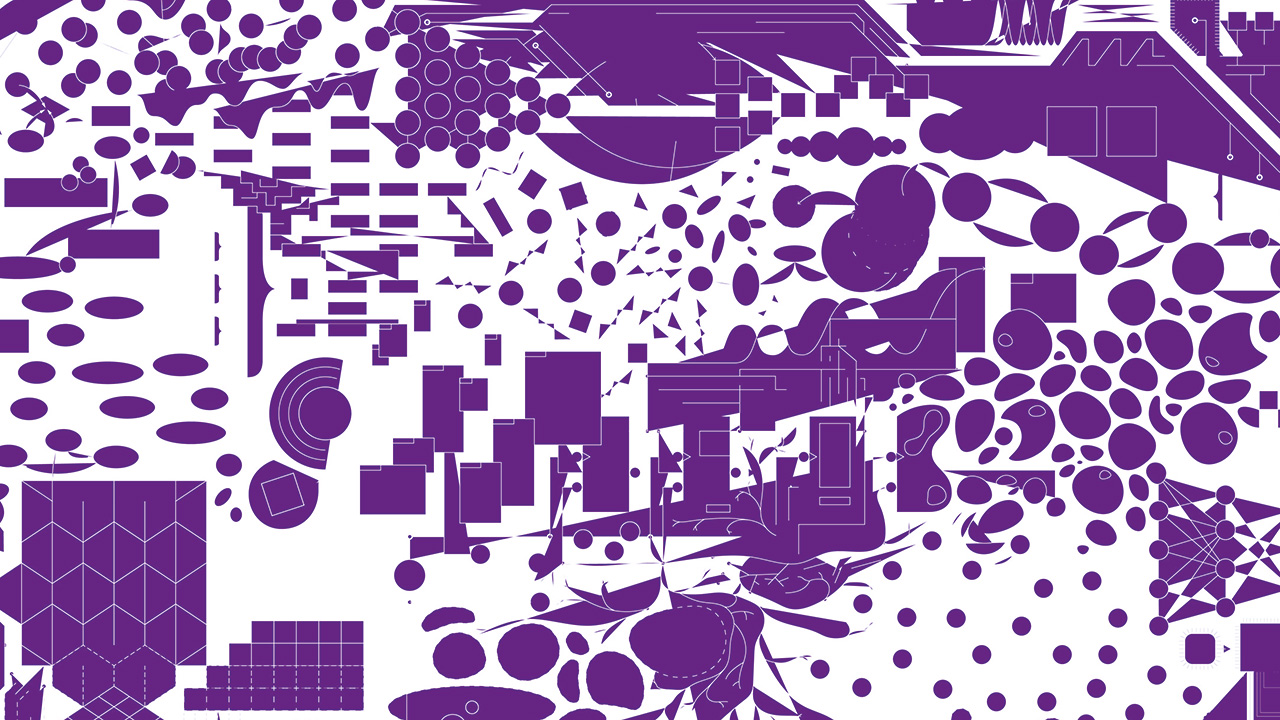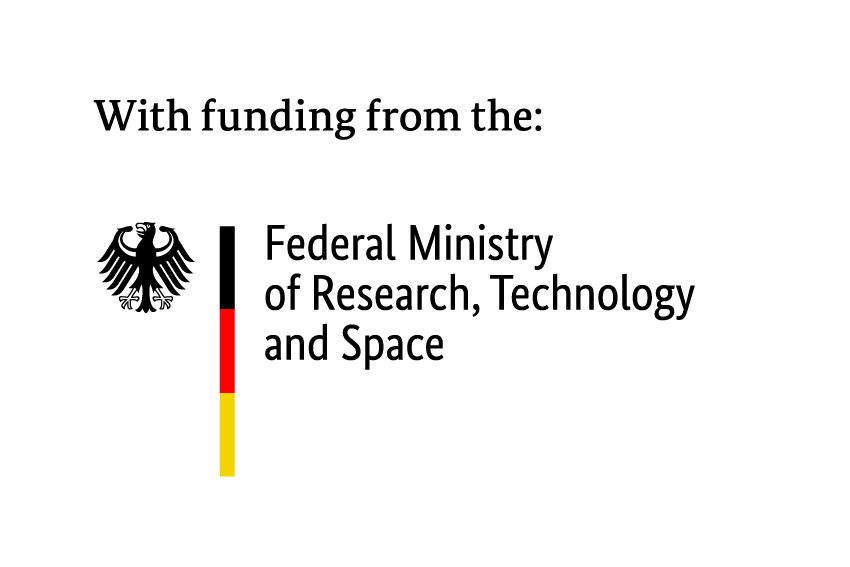The Importance of Science Communication Research and of Science Studies for the Region – Opening of the RRC in Dortmund
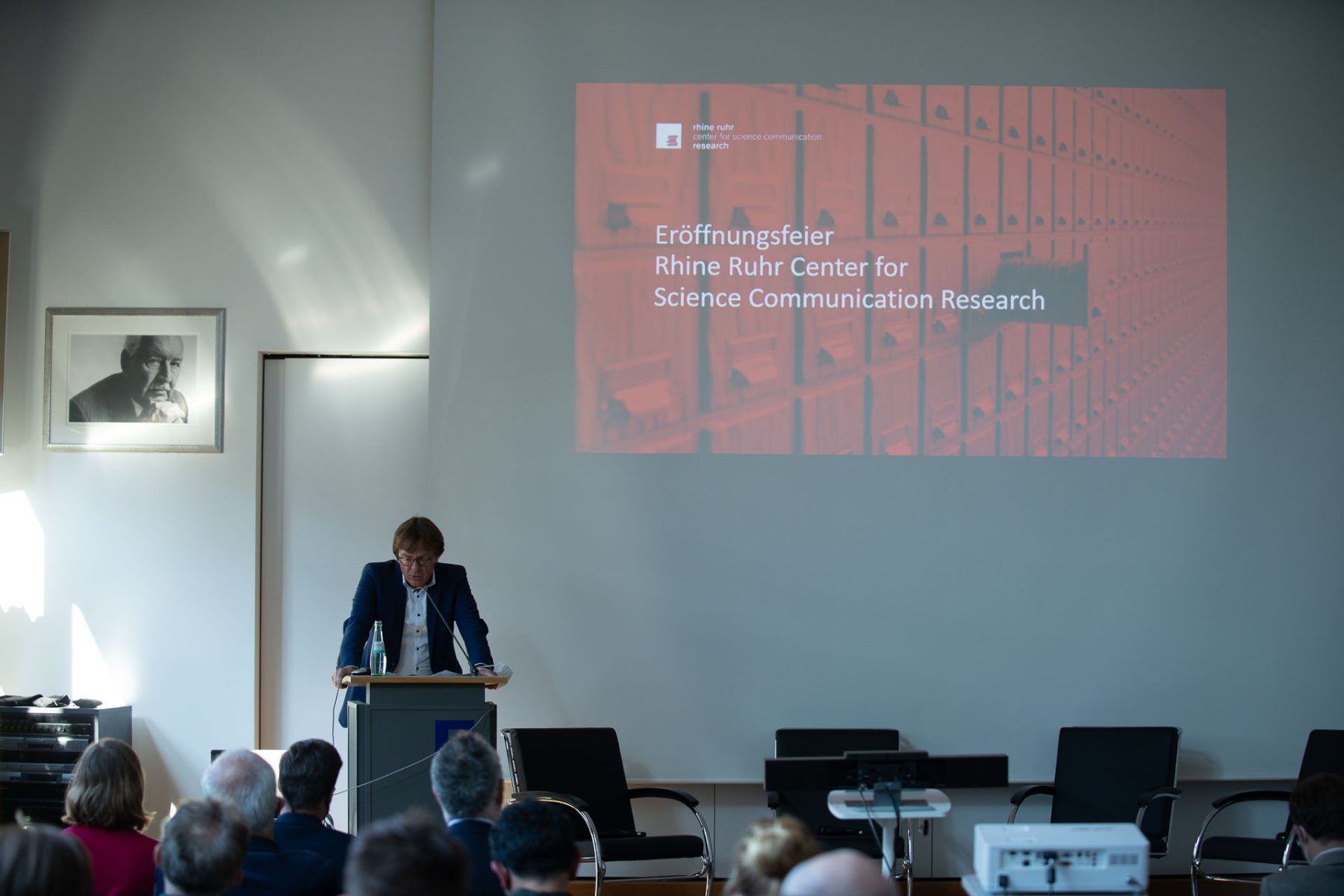
How can science communication be practiced under post-truth conditions? And what role do the humanities and social sciences play in this context? The Rhine Ruhr Center for Science Communication Research (RRC) is devoted to answering these and other pressing questions. The center is funded by a generous grant from the Volkswagen Foundation and headed by Julika Griem of the Kulturwissenschaftliches Institut Essen (KWI), David Kaldewey of the Forum Internationale Wissenschaft (FIW) at the University of Bonn, Holger Wormer of the TU Dortmund, Oliver Ruf of the University of Applied Sciences Bonn-Rhine-Sieg as well as Volker Stollorz of the Science Media Center in Cologne and Franco Zotta of the German Science Journalists’ Association.
The RRC is devoted to science communication with a special focus on the humanities and social sciences. As such, it addresses highly important questions about how insights from the reflexive social and cultural research on science might be communicated. Natural scientists usually attract attention via stimulating images of ground-breaking discoveries. Not so the reflexive sciences on science. Thus, there are elementary questions that need to be answered about the communicability of insights from social and cultural research on science. Next to this, RRC aims to, over the course of its initial five-year funding, bring its findings closer to practicing journalists as well as to students in interdisciplinary workshops and conferences. On June 2, 2022, the RRC officially opened with a celebratory inauguration at the Erich-Brost-Institute at TU Dortmund. Together with our director Stefan Böschen I ventured to Dortmund to attend the event, at which we met with many familiar faces from science studies and journalism.
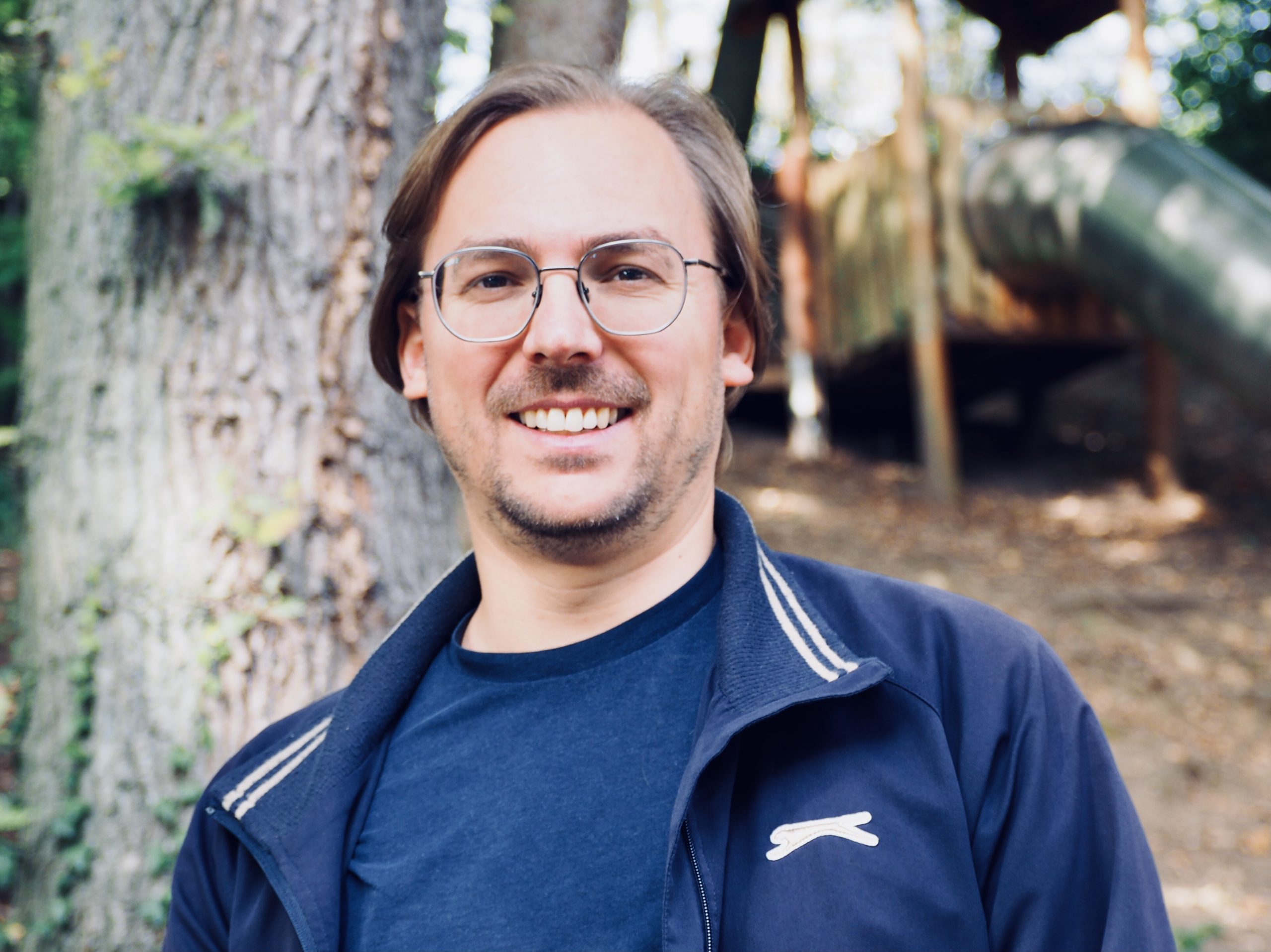
Phillip H. Roth
Phillip is postdoc and the events coordinator at c:o/re. Among other topics, his research is dedicated to questions of identity work in biomedical disciplines, to the meaning of medicine and the role of patient advocacy on the internet as well as to social and cultural conditions of scientific modeling. In a current project, he is trying to develop a sociology of pandemics for the digital age that draws on communication theories of virality and contagion.
After welcoming words by Holger Wormer, the inauguration consisted of a brief overview of the RRC’s three main research projects, given by Julika Griem, as well as three panel discussions, each moderated by one of the RRC’s heads. The panels were devoted to core problem areas of the RRC, making up most the of the formal part of the evening. In the first, moderated by Oliver Ruf, Julia Schubert (University of Speyer) discussed with local students about “Science Communication in Times of Multiple Facts”. One of the core take-aways of this insightful discussion was that the students desired the humanities and social sciences to be more present in public science communication. They stressed particularly that they promised themselves that these fields would be better equipped than natural or engineering sciences to deal with the problems of post-truth in current debates. The second panel, moderated by David Kaldewey, consisted of a dialogue between science journalist Birgit Herden (Die Welt) and the sociologist of science and technology Cornelius Schubert (TU Dortmund) about “Images and Imaginations of Science”. They reflected on how journalism and sociology address different audiences. Variety of audiences necessarily also leads to conflicts between the trajectories of the two professions. While journalism needs to “close” scientific debates to make the topic appealing to its readership, [1]Peter Conrad (1999). Use of Expertise: Sources, Quotes, and Voice in the Reporting of Genetic News. Public Understanding of Science 8 (4): 285–302. https://doi.org/10.1088/0963-6625/8/4/302 a key ambition of science studies, sociology of science or STS is to “open up” the infamous black box of science.[2]Trevor J. Pinch and Wiebe E. Bijker (1984). The Social Construction of Facts and Artefacts: Or How the Sociology of Science and the Sociology of Technology might benefit each other. In Social Studies … Continue reading This is aligned with our effort to “unbox science” here at c:o/re. This ultimately also thwarts any settlement on “the facts”, making science a volatile and (politically) malleable business in sociologists’ eyes, something that is particularly critical under post-truth conditions. However, Schubert also recalls the common heritage of journalism and sociology in the reportages that founded the early-twentieth century Chicago School,[3]https://en.wikipedia.org/wiki/Chicago_school_(sociology) offering hope that each in their own way can contribute to successfully communicating the complexities of scientific research and its findings to the public. In a third session, panellists Eva Weber-Guskar (University of Bochum) and Samir Sellami asked about “A Quality Circle for the Humanities and Social Sciences?” Both are initiators of online platforms – PhilPublica and Soziopolis, respectively – that are devoted to bringing scholarly content to a wide readership. Together with the journalist Volker Stollorz, who moderated the panel, they reminisced whether and how these open formats might provide criteria for the successful communication of scientific content in the digital world. During the informal part of the event – drinks and snacks in the courtyard of the Erich-Brost-Institue while the sun was shining, and the temperatures were warm – we were able to catch up with friends and colleagues after an almost two-year hiatus from in-person events.
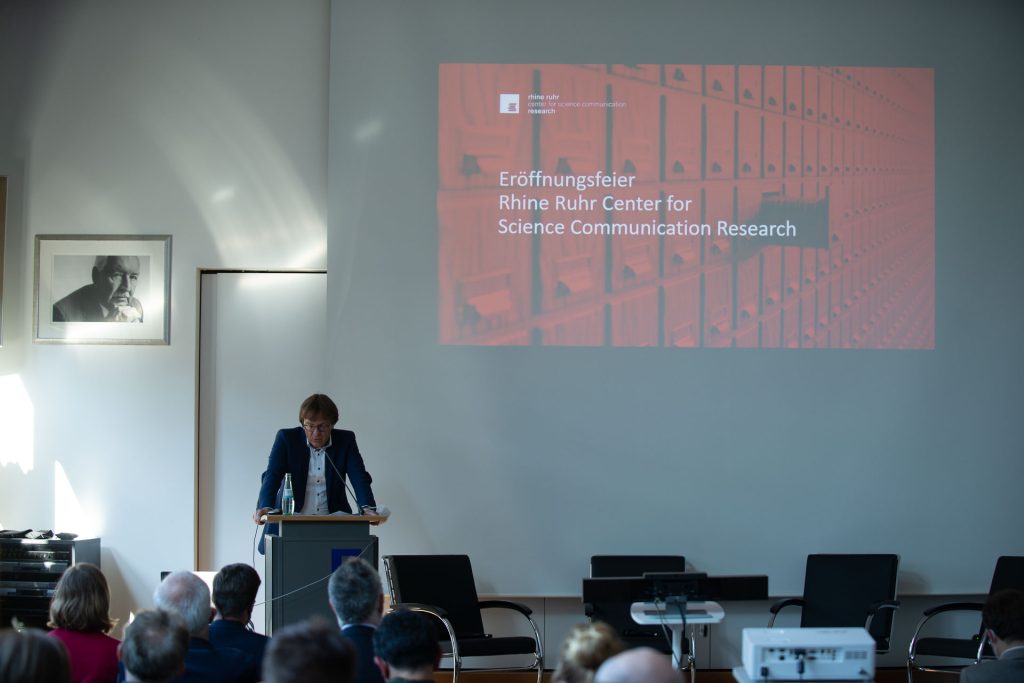
A crucial feature of the RRC is that it considers science communication not only from a communication research perspective, but also from a cultural studies (KWI Essen) as well science studies & STS perspective (FIW Bonn). For this reason, we at c:o/re look forward to partnering with the RRC on questions at the intersection of science studies and science communication research. We hope that this partnership will help to unravel what science communication entails in the current mediascape and, also, what we can learn from it practically for communication at c:o/re and elsewhere. Given the grand challenges we face today,[4]David Kaldewey (2018). The Grand Challenges Discourse: Transforming Identiy Wlrk in Science and Science Policy. In Minerva 56: 161-182. https://doi.org/10.1007/s11024-017-9332-2. such as climate change, the digitalization of research practices, energy and mobility transformations, resource scarcity, war and poverty, we also wish that it will strengthen the role of science studies scholarship in the Aachen-Rhine-Ruhr region and in Germany more generally, providing a clearer picture of the role that science can play in facing these challenges.
A first joint conference between the RRC and c:o/re is already in the making and is set to take place in 2023. We will keep you posted as things develop and also about further collaborations between the partners at the RRC and c:o/re. Please also see our events section for infos on further upcoming workshops, lectures and conferences. For now, all that remains is for us to wish our friends at the RRC all the best for their projects. We look forward to the friendly and frequent exchanges about science studies and communication research – cheers!
Proposed citation: Phillip Roth. 2022. The Importance of Science Communication Research and of Science Studies for the Region – Opening of the RRC in Dortmund. https://khk.rwth-aachen.de/2022/06/17/3613/3613/.
References
| ↑1 | Peter Conrad (1999). Use of Expertise: Sources, Quotes, and Voice in the Reporting of Genetic News. Public Understanding of Science 8 (4): 285–302. https://doi.org/10.1088/0963-6625/8/4/302 |
|---|---|
| ↑2 | Trevor J. Pinch and Wiebe E. Bijker (1984). The Social Construction of Facts and Artefacts: Or How the Sociology of Science and the Sociology of Technology might benefit each other. In Social Studies of Science 14 (3): 399-441. You can read the paper here. |
| ↑3 | https://en.wikipedia.org/wiki/Chicago_school_(sociology) |
| ↑4 | David Kaldewey (2018). The Grand Challenges Discourse: Transforming Identiy Wlrk in Science and Science Policy. In Minerva 56: 161-182. https://doi.org/10.1007/s11024-017-9332-2. |
Publication: Energy Arts, Power, and Perception: Artistic Interventions in the Context of Climate Change
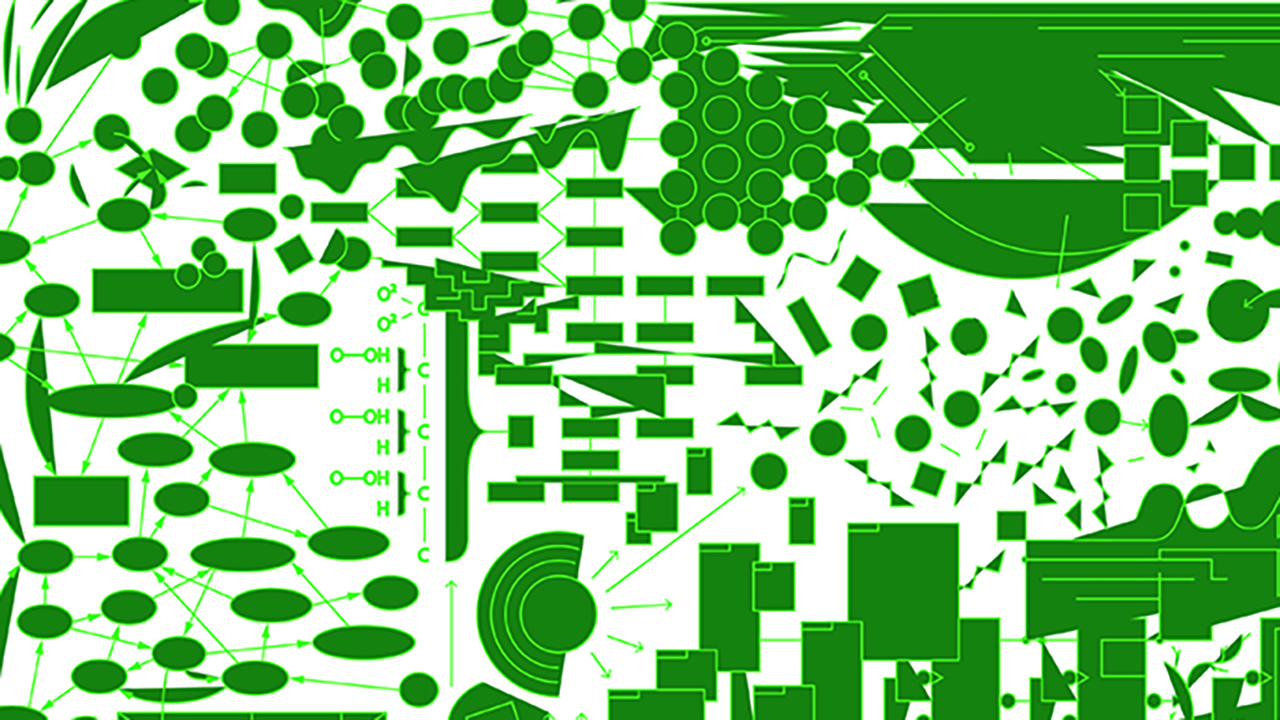
A new article titled “Energy Arts, Power, and Perception: Artistic Interventions in the Context of Climate Change” by c:o/re fellow Hannah Star Rogers has just been published in the Oxford Research Encyclopedia for Natural Hazards.
As energy systems are increasingly understood as underlying practical and existential risks, artists are responding with new modes of artwork addressing many energy-related questions and concerns. Energy arts is a field of artistic practice focused on the concepts, materials, and societal impacts of energy systems. Spanning visual art, performance, installation, and design, it explores the physical properties of energy, its political and economic structures, and its environmental consequences. Artists make visible energy’s often-invisible flows, critique dominant systems such as fossil fuel dependency, and propose alternative futures through renewable energy, speculative design, or reuse of obsolete infrastructure. Engagement with energy builds on a broader history of artists responding to natural hazards and technological change, revealing the interdependence of human-made and natural systems. Works range from material-based installations, such as Richard Wilson’s petroleum-filled 20:50, to activist projects like Olafur Eliasson’s solar-powered Little Sun, and wind-powered sculptures such as Theo Jansen’s Strandbeests. Jessica Segall’s Human Energyaddresses the embodied and cultural dimensions of energy consumption, while critical explorations of waste are exemplified by the performance and sound work of Sarah Ancelle Schönfeld and Louis-Philippe Scoufaras. Others, like the Land Art Generator Initiative, combine art and engineering to propose renewable energy infrastructures. Energy art overlaps with environmental art and eco-art but is distinct in centering energy systems as cultural and aesthetic concerns. By reframing energy as more than a technical issue, these works foster public engagement, interdisciplinary collaboration, and new ways of imagining energy transitions. Energy art helps expand public understanding and increase questioning around energy’s materiality, infrastructures, and futures in a climate-changed world.
Find the article on the publisher’s website here.
Publication: Computing Cultures

A new volume by c:o/re senior researcher Arianna Borrelli and Helena Durnová is out now: Computing Cultures. Knowledges and Practices (1940–1990).
Highlighting the diverse and fragmentary nature of the so-called “digital turn,” this volume offers a glimpse into the landscape of different computing cultures which emerged side by side between the 1940s and the 1990s, at times sharing some features, yet remaining essentially independent from each other. Some of these cultures disappeared, some thrive until today, but understanding all through their knowledges and practices, interconnections and broader historical context, is essential to deal critically with the visions and dreams, fears and tensions characterizing digital practices in today’s knowledge societies.
The volume is available as open access on the publisher’s website.

Science between Disinformation, Political Influence and Restrictions on Academic Freedom
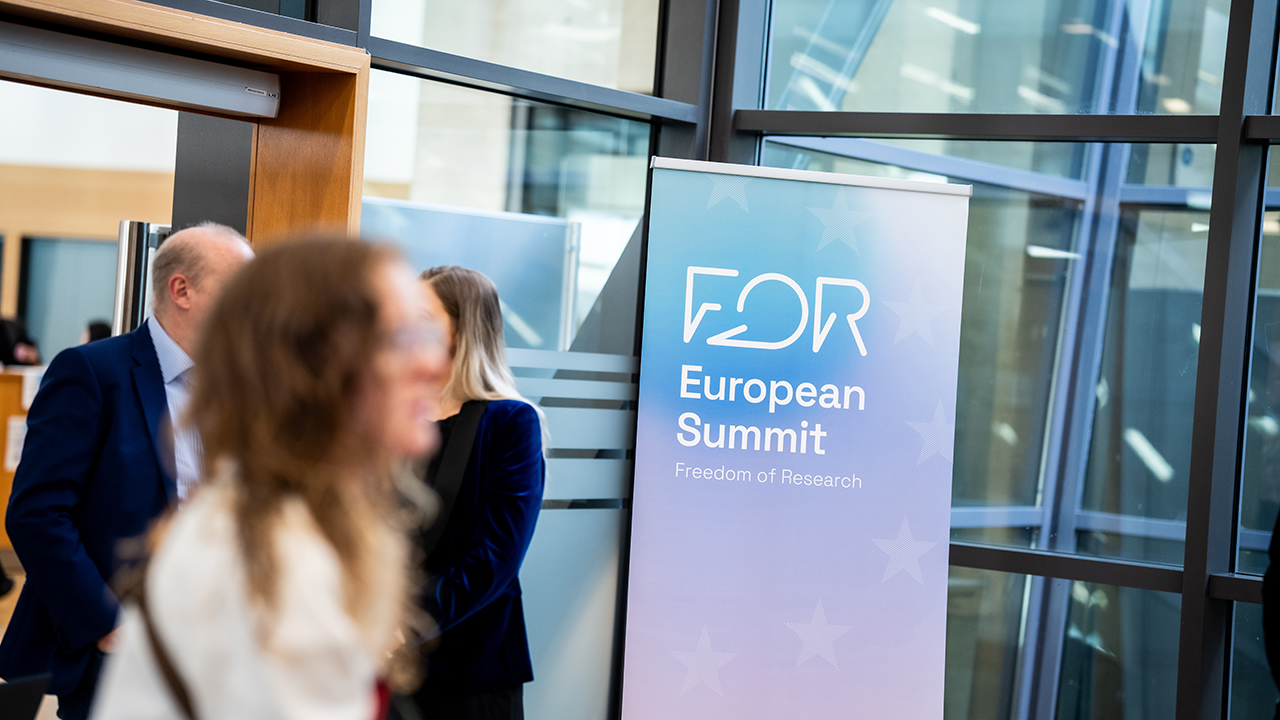
JANA HAMBITZER
In a time of geopolitical tension and social division, streams of disinformation, and political interference in science, academic freedom is increasingly under threat, even in places known for their free and thriving academic landscape. With its focus topic Europe in Times of Divisions, this year’s Freedom of Research: A European Summit provided a space for joint reflection and discussion on how Europe and its scientific community can protect themselves against these threats.
Jointly organized by the International Charlemagne Prize of Aachen, the Knowledge Hub and the Käte Hamburger Kolleg c:o/re of RWTH Aachen University, the Summit’s two-day program included a festive evening reception at the Aachen Town Hall’s Coronation Hall, a symposium, and the Stand-up FoR Science Night in a local cinema. The symposium, which took place on November 6 at RWTH Aachen University’s SuperC, brought together scholars, politicians, and business representatives to promote dialogue and explore ways to build bridges, uphold shared values, and foster scientific exchange in times of division.
Bridging knowledge and power
The keynote speech was held by Prof. Dr. Maria Leptin, President of the European Research Council, who emphasized the importance of exchange and dialogue to protect the freedom of research, a task that requires tolerating and even fostering dissent. In her analysis, she pointed out that universities, in particular, are under attack because they are places where people question prevailing conventions, ask uncomfortable questions, and embrace curiosity. Yet science best serves the state and society precisely when it’s free from ideological content and constraints. Science is not a service, its value lies in its slow, exploratory quality. Professor Leptin criticized some trends in funding and evaluation programs that are linked to an understanding of science as a utility: “Pizza gets delivered, not research results.”

The follow-up panel further developed the question of how funding can be used as a tool of political power, with contributions by Dr. Toon van Overbeke, Charlemagne Prize Fellow 2024/25, Caroline de Gruyter, European Affairs Correspondent and Columnist, Prof. Dr. Maria Leptin, and Erica Lutes, Head of Fulbright Commission Brussels. They advocated stable, performance-independent institutional funding and emphasized that the freedom to take intellectual risks, embrace failure, and build public trust is essential for science as a public good – in Europe and beyond.

Prof. Dr. Maria Leptin, and Dr. Toon van Overbeke
The symposium then featured two TED-style talks: Dr. Dr. René von Schomberg, shed light on a different kind of threat to the freedom of research: the digital transformation of the academic publishing system. In this system, data analytics shape the credibility and focus of research, and bibliometric indices have become an autonomous currency determining the value of research. He raised the question of whether researchers in this system are truly free and independent and noted how competition results in the loss of mutual responsiveness and collaboration within the scientific community, thereby also damaging the freedom of research. Publishers reduce wisdom to the strategic use of knowledge, making research results irrelevant, as long as bibliometric data can be used as main criterion for ranking the “most important” publications. The second talk also addressed the issue of communication within and outside the academic community: Prof. Dr. Sahana Udupa, Professor of Media Anthropology at LMU Munich, explored how fun and humor on social media could be reframed from exclusionary extreme speech to foster new ways of connecting. She pointed out how reclaiming humor and dignity in online spaces is a powerful way to combat platforms that encourage hate speech and online trolling.

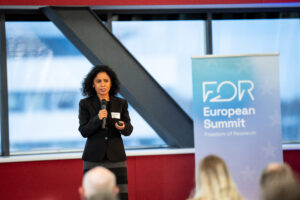
Bridging interests and ideals
How dependent is Europe on foreign infrastructure? This question was examined in a conversation between Dr. Oliver Grün, Founder and CEO of the GRÜN Software Group and President of the European Digital SME Alliance, Prof. Dr. Dr. Thomas Lippert, Director of Jülich Supercomputing Centre, and Rebekka Weiß LL.M, Head of Regulatory Policy and Senior Manager Government at Microsoft Berlin. They discussed whether EU regulations strengthen Europe’s leadership or limit innovation, as well as how to strike a balance between responsibility, sovereignty, and competitiveness. One of the key takeaways was that Europe must develop its own model of technology based on trust and democratic values. Additionally, it was emphasized that digital sovereignty is crucial for Europe to prepare for the future and be capable of shaping the global technological order.

Technological innovation is particularly important for helping face the challenges of climate change. The European Union’s goal of creating 100 climate-neutral and smart cities by 2030 aims at driving a sustainable, inclusive, and resilient urban future, but it is very ambitious. The panel discussed the challenges of this project building upon the expertise of Dr. Ali Abdelshafy, Charlemagne Prize Fellow 2024/25, Patrick Child, Deputy Director-General of DG Environment at the European Commission, and EU Mission Manager for Climate-Neutral and Smart Cities, Prof. Dr. Cornelia Redeker, Professor in Architecture and Head of Umeå University School of Architecture, Member of the New European Bauhaus Facility Experts Group, and Valentino Tignanelli, Architect, Designer and Project Manager at Aaltosiilo Ry and Factum Foundation in Oulu, Finland. Successful climate initiatives depend on collaboration with various stakeholders from science, politics and society. The panelists examined the tension between utopia and reality. How can ambition turn into action, economic interests into sustainability, and policy into lived experience? The panel concluded that, in the pursuit of climate neutrality, it is important to consider the balance of prosperity, sustainability, and heritage, and to discuss buildings in the context of their surroundings.

Bridging science and society
Exchange opportunities and the need for dialogue were further emphasized during the panel on “Rethinking EU Enlargement,” moderated by Sophia Beiter, Charlemagne Prize Fellow 2024/25, featuring Prof. Dr. Giselle Bosse, Full Professor and Chair in EU External Democracy Support at Maastricht University, and Dr. Giulio Venneri, Deputy Head of Unit, Directorate-General for Enlargement and Eastern Neighbourhood (DG ENEST) at the European Commission. The discussion focused on how science, politics, and civil society can be better connected and how effective communication can help rebuild trust and engagement with citizens in times of democratic backsliding, geopolitical uncertainty, and declining public trust. Addressing the topic of EU enlargement, the panelists agreed that citizens must be informed about potential benefits and possible challenges, as well as how European institutions plan to meet the latter by “not only promoting, but also defending democracy,” as stated by Giulio Venneri.

The symposium concluded with a discussion about education as one of Europe’s most powerful instruments for fostering connection across borders, disciplines, and generations. Panelists were Santiago Ardisson, Jean Monnet Professor at Universidad Austral, Boris Walbaum, Founder and President of Forward College, and Walter Zampieri, Head of Unit for European Higher Education at the European Commission. How can universities and knowledge communities uphold freedom of thought, rebuild trust, and promote cooperation within Europe and with other regions of the world? The panel explored how the EU fulfills its mission of fostering teaching, research, and innovation as a foundation for open, democratic societies through initiatives such as the European University Alliances. The problems higher education is facing today were also addressed, in particular the dominance of AI technologies. From this perspective, lecture halls are important spaces that encourage human interaction and the development of intelligent individuals skilled in overcoming the societal challenges of today and tomorrow.

Protecting academic freedom as an individual and institutional priority
At the end of the day, it had become clear that open dialogue and scientific exchange, independent of pressure from funding and publishing systems, are essential to protecting and upholding European values of freedom and democracy. Both scholars and institutions must remain alert to potential restrictions on academic freedom, because influences that may later prove decisive may not be clearly recognizable at the time decisions are made. When considering protective measures, it is important to think about possible undesirable consequences and avoid sliding into isolation, exclusion, and the radicalization of debates. Freedom requires respect and mutual recognition. In order for Europe to continue developing democratically, scholars and institutions must work together as responsible actors to create and implement approaches that safeguard freedom of research – building bridges along the way.
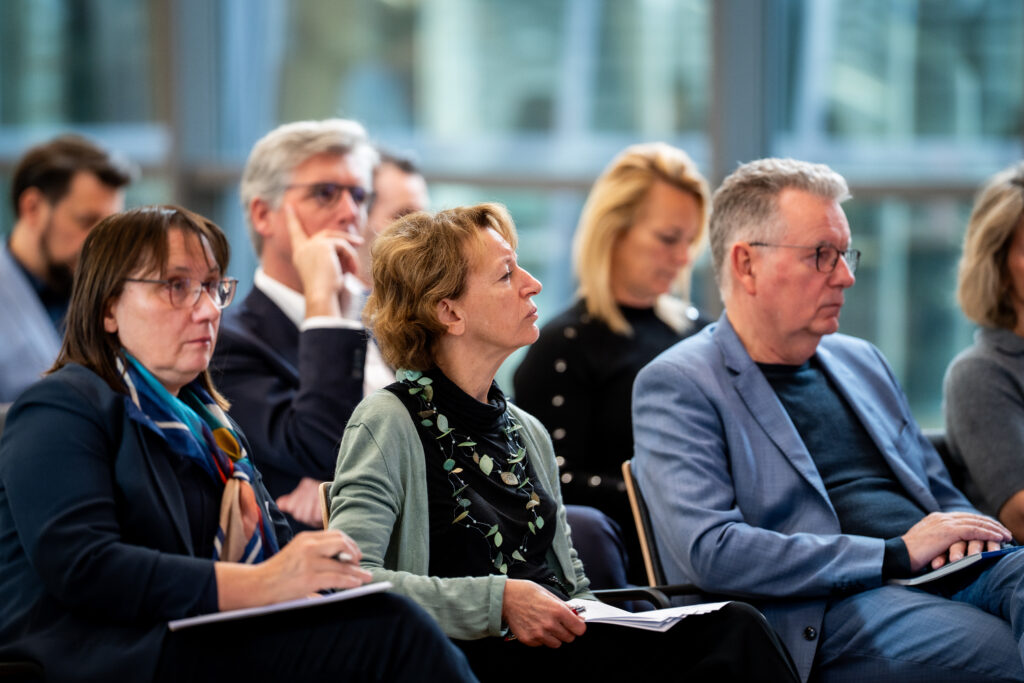

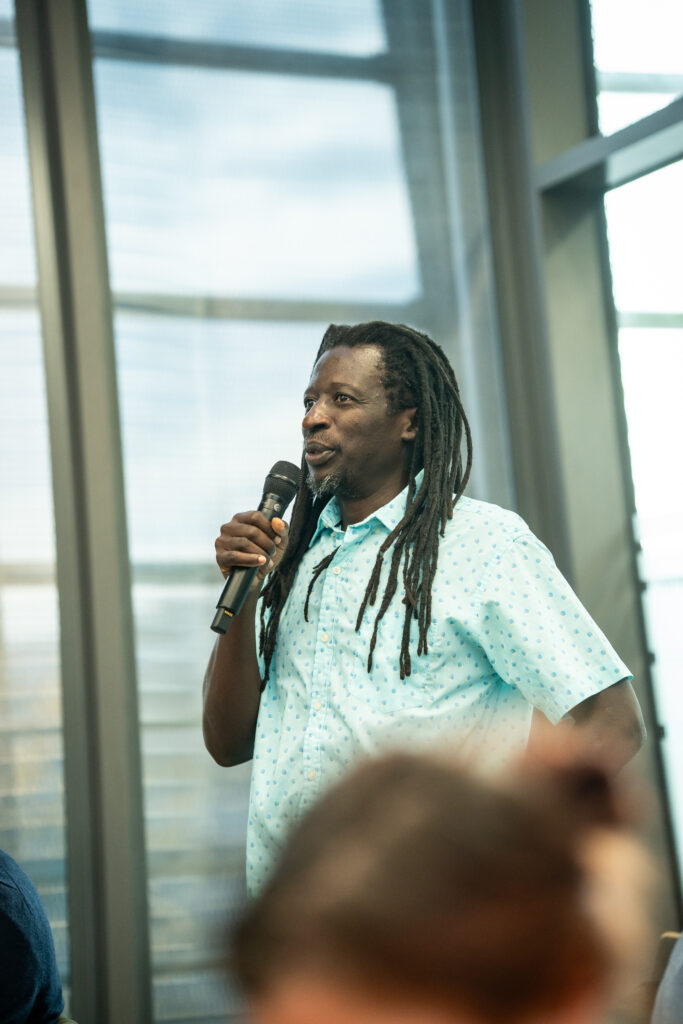
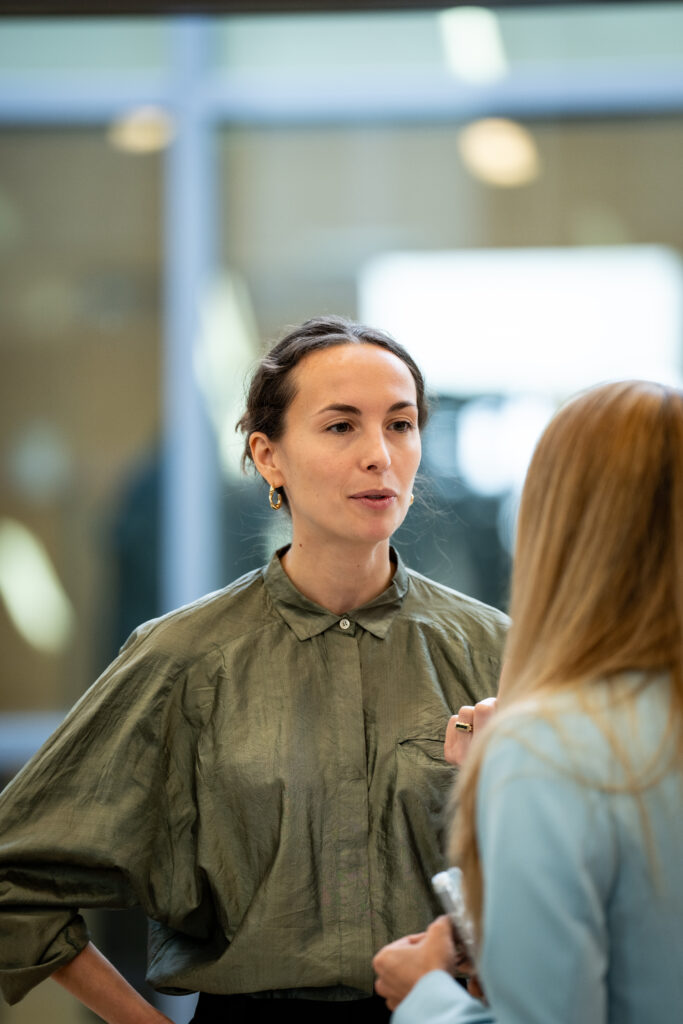

Photo Credits: Christian van’t Hoen
Ten years of PD14: milestone model shapes digital neuroscience and AI research
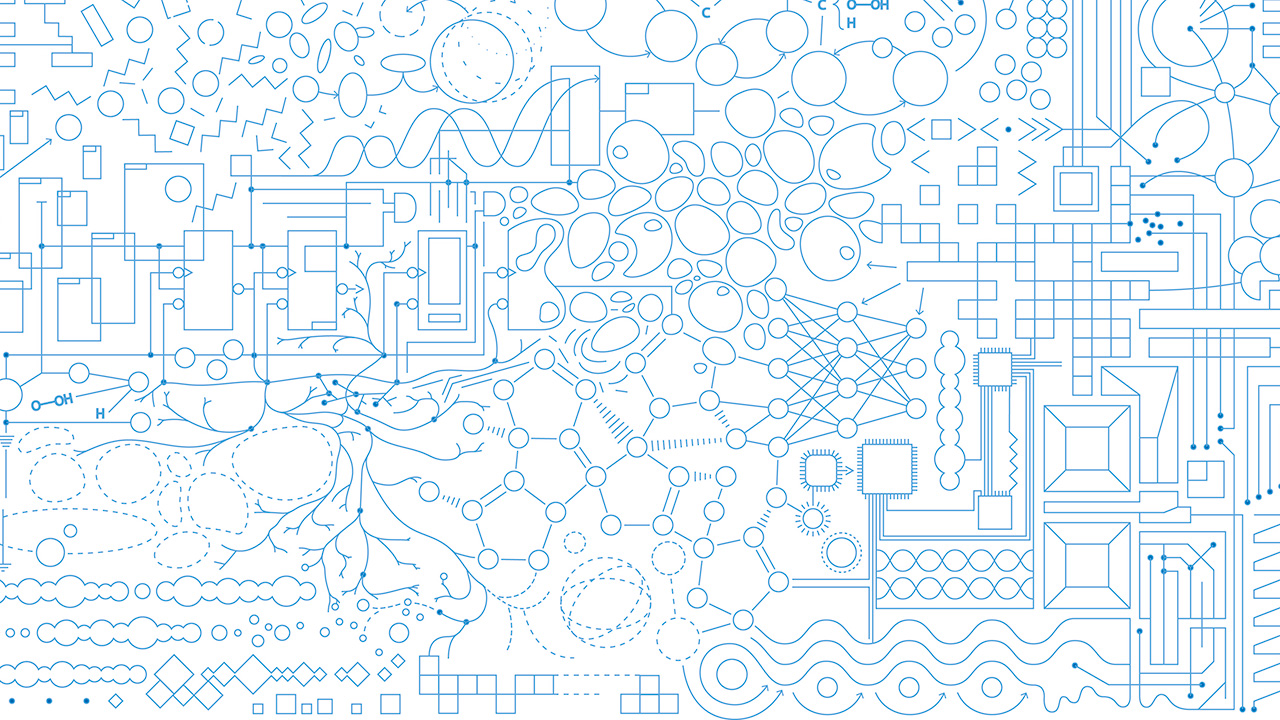
You can find the original article on FZ Jülich’s website here.
Neuronal circuit models help researchers better understand how nerve cells in the brain work together and can be used computationally to advance brain research. A key step toward computational neuroscience was the model of early sensory cortex developed by Dr. Tobias Potjans and Prof. Markus Diesmann, known as PD14. Published in 2014, it has become a research standard – as a basis for more complex brain models, as a testbed for computational methods, and as a benchmark for the performance of new computer systems.
In April 2024, researchers from around the world met at the Käte Hamburger Kolleg: Cultures of Research (c:o/re) at RWTH Aachen University to reflect on the model’s importance for work in computational and theoretical neuroscience on the occasion of its tenth anniversary. The results of the symposium have now been published in the journal Cerebral Cortex. In this interview, Prof. Markus Diesmann and Prof. Hans Ekkehard Plesser, lead author of the report, discuss the significance of PD14 and the opportunities and challenges of digital neuroscience, as illustrated for example by the European research platform EBRAINS.
Why was the PD14 model so successful?

Diesmann: We originally developed PD14 to better understand how the structure of neuronal networks affects their activity patterns. Over the past ten years, PD14 has inspired many lines of research. Researchers have used it as a building block for larger brain models, as a reference model for theoretical analyses, and as a benchmark for novel neuromorphic computer systems. This was made possible by systematic support for technology projects from the European Union over the last 20 years. Projects such as the Human Brain Project (HBP) have brought neuroscience into the realm of large-scale research and made EBRAINS possible. Within these projects, shared standards for the sharing and documentation of models were established. As a demanding use case, PD14 was selected as a demo already in the EU project BrainScaleS and has since driven further development.
“Sharing” is a key word. Why is this still so difficult for the community?

Plesser: Even today, many neuronal models are implemented in general-purpose programming languages such as MATLAB, Python, or C. This often limits their potential for reuse. Nevertheless, in the ten years since PD14 was published, neuroscience has made great progress in scientific software development. Research code is now created according to modern software-engineering principles, and the new field of Research Software Engineering (RSE) is gaining international importance. While hardware is usually replaced about every five years, scientific software such as the NEURON or NEST simulators remains relevant for decades. As a result, scientific software must be seen, operated, and funded as a permanent research infrastructure – a point that funding bodies have so far only partly addressed.
Where did this change in thinking come from?
Plesser: Large initiatives such as the Human Brain Project have changed how the community thinks. Models and simulation systems are now treated separately: simulation codes are provided as stable infrastructure, while researchers can investigate very different networks on the same platform. Open repositories such as OSB, ModelDB, or the EBRAINS Knowledge Graph make these models accessible worldwide, and standardized model description languages such as PyNN and NeuroML ensure compatibility.
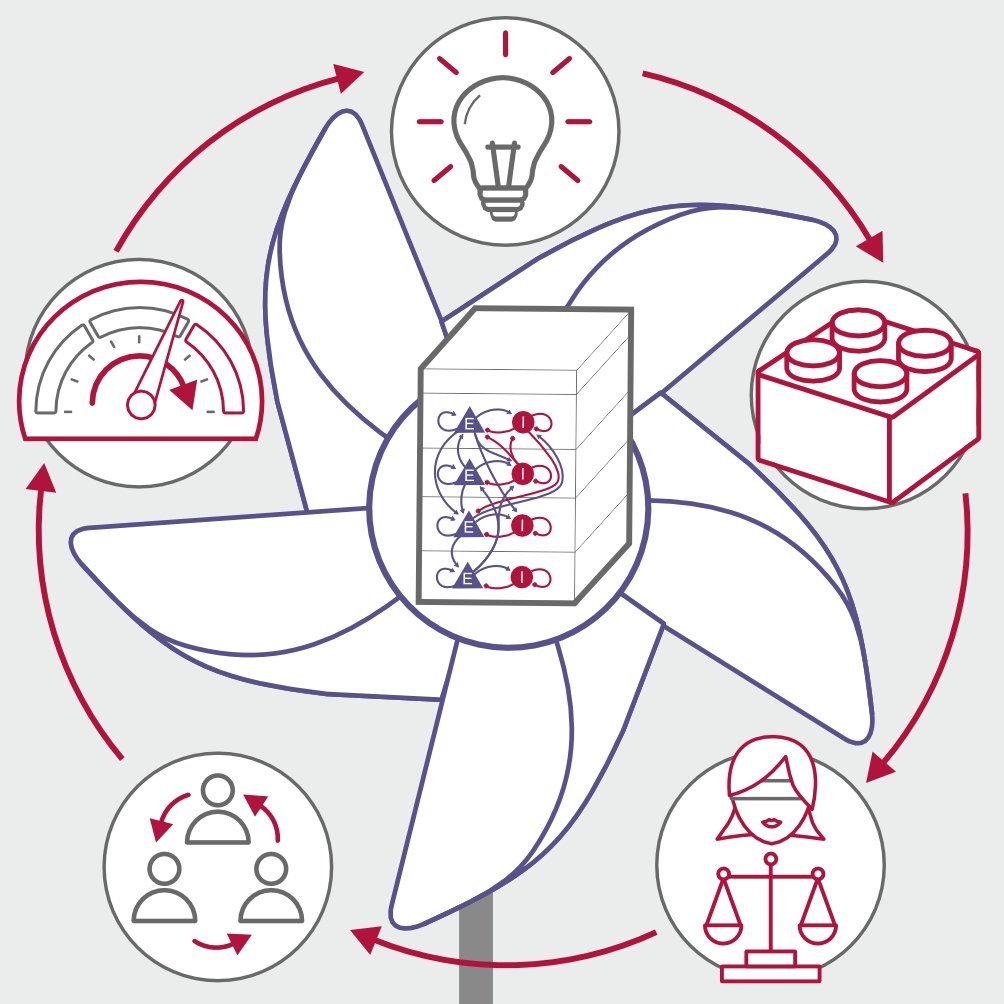
Impact of the PD14 model
The model of the cortical microcircuit (center) had an impact on five aspects of research (clockwise from top): conceived to provide neuroscience insight, the model became a building block of more advanced models, served as reference for the validation of mean-field theories, drove the development of methods for model sharing, and became a standard for benchmarking of neuromorphic and GPU systems.
How did research data develop in parallel, and what does this mean for PD14?
Diesmann: The experimental data basis for large-scale models has improved significantly thanks to techniques such as 3D electron microscopy, high-resolution electrophysiology, optophysiology, and layer-specific MRI. Projects like MICrONS provide standardized datasets that make it easier to construct data-driven models. These new datasets enable the validation and further development of the PD14 model, especially with regard to network dynamics and functional tests. PD14 already serves as a blueprint for building new, larger brain models that are composed from existing building blocks. The model helps define standards for the exchange and reuse of models and promotes collaboration between computer science, physics, biology, and engineering.
A look into the future: where are models heading, and what role does AI play?
Diesmann: Future models will increasingly represent realistic, spatially organized structures and closed functional circuits of the brain. After all, the brain does not exist just to produce neural activity but to enable rapid information processing for the organism. The original PD14 model did not yet include function – but that is what we are working on now. This brings the vision of so-called digital twins of the brain closer: virtual counterparts of biological systems that allow experiments and hypothesis testing in silico. In contrast to today’s AI, the focus here is on uncovering the mechanisms of information processing in the brain. These insights, in turn, can inform future AI systems. Conversely, AI already supports this progress by learning complex relationships from large datasets and predicting neuronal responses.
Where do you see obstacles on this path?
Plesser: Many models are still developed individually and in an ad hoc manner, often without integrating existing infrastructures – as self-written code on a laptop. Sometimes we even hear: “Everything I care about I can do on my laptop.” But a new generation of researchers, shaped by international training programs and cloud-based model platforms like EBRAINS, is working more collaboratively and using shared tools as a common foundation. This development may mark a turning point at which neuroscience evolves from a discipline of individual pioneers into a collaborative large-scale enterprise.
About PD14
The PD14 model describes the connectivity of about 77,000 nerve cells with around 300 million synaptic connections under an area of only one square millimetre of cortical surface. It consists of fewer than 400 lines of Python code and can even be simulated on modern laptops. In the spirit of open and transparent science (FAIR principles: findable, accessible, interoperable, reusable), the model has been released in several variants. One of these is based on the PyNN language and has been made available to the research community via the Open Source Brain platform. PD14 has been very successful: by March 2024 it had been used as a component in 52 scientific studies and cited in over 230 publications.
Original publication: Hans Ekkehard Plesser, Andrew P Davison, Markus Diesmann, Tomoki Fukai, Tobias Gemmeke, Padraig Gleeson, James C Knight, Thomas Nowotny, Alexandre René, Oliver Rhodes, Antonio C Roque, Johanna Senk, Tilo Schwalger, Tim Stadtmann, Gianmarco Tiddia, Sacha J van Albada, Building on models—a perspective for computational neuroscience, Cerebral Cortex, Volume 35, Issue 11, November 2025, bhaf295, https://doi.org/10.1093/cercor/bhaf295
The Ambiguity of Sorting: How do technologies of separation bring us together?

Digital systems are based on acts of transformation from continuity and unity into discreteness and separation. These acts of transformation have been popularized in the multiple ways in which humans engage with AI systems and other forms of digital technologies. Everything we do is transformed, one could say, automatically into data. It is transformed into discrete units that can be computed. Digital technologies have become more than tools for research; people produce knowledge with them, engage emotionally through and with these systems, generating new forms and spaces of intimacy. At the same time, these technologies carry a history of creating disconnections, failing to account for different ways of engaging with the world. They are the result of a certain imaginary of the human and intelligence, one that leaves aside many other existing ways to be in the world. What kind of communities are enabled by technologies? What kind of technologies are successful in bringing communities together? Can we imagine a history of technology that is based on plural ways of understanding intelligence and the human? How can we design technologies that bring people together? How can we imagine technologies that enable communities?
The Ambiguity of Sorting is a pop-up exhibition and a panel discussion that takes place during the 8th edition of the Conference of the Society for the History and Philosophy of Computing. The event brings together installation, performance, and conversations to discuss how the history of intelligent systems embodied ideas of intelligence, the human, and how we live together. With the panel, we invite to think of a different history of computing, one where those that were not thought to be fitting within their categories were creating their own technologies all along.
With contributions by: Sasha Bergstrom-Katz, Ren Loren Britton, and Verena Friedrich
Organization and moderation: Ana Maria Guzmán Olmos
Thursday, December 18, 2025, 6 to 8 pm
Super C – 6th floor – Generali-Saal, Templergraben 57, Aachen, Germany
The event takes place on the 6th floor of the SuperC building. The 6th floor can be reached via an elevator where a wheelchair fits in. A barrier-free restroom is available. If you have any questions about the space, please write us to: events@khk.rwth-aachen.de.
The event will take place in English spoken language.
Abstracts
Unboxing Intelligence
Bergstrom-Katz’s project, Unboxing Intelligence, positions the intelligence test kit not merely as a scientific tool, but as a powerful actor in its own right and casts it at the center of a critical investigation into the construction and dissemination of intelligence. Composed of toys, games, puzzles, and instructional booklets, all organized into a handy kit, the test operates as a charismatic yet destructive object, one that has shaped and circulated ideas of measurable intelligence across the twentieth century and beyond. Approaching it through the lenses of artistic research, performance studies and material cultures, the project theorizes the test as a nesting doll of scientific readymades; it is a mass-produced and ideologically loaded object constituted of readymade theories, objects, and performances. This presentation, specifically, will present test as a readymade performance and will include a short new performance piece.
Find the talk and performance abstract as pdf documents here.
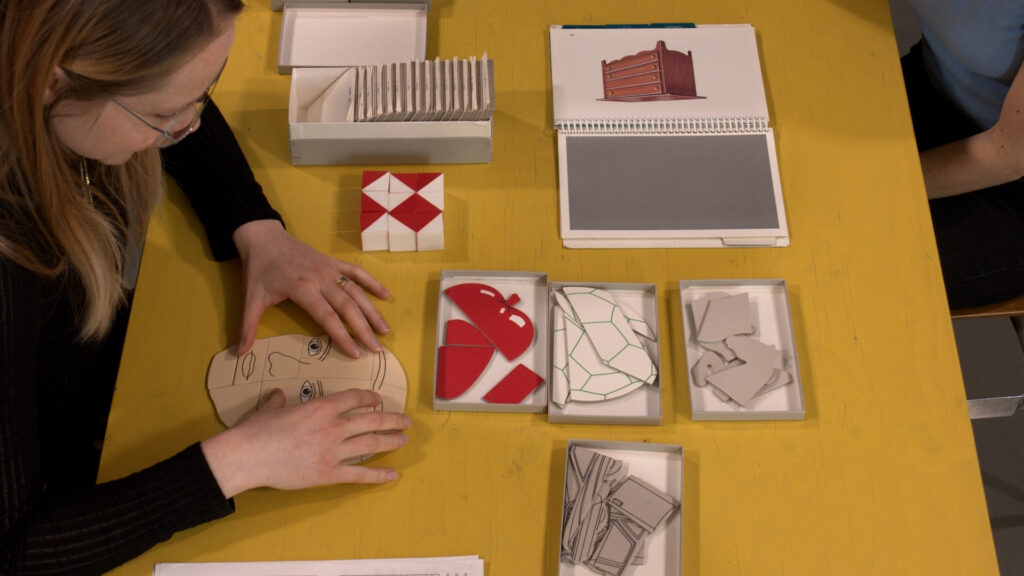
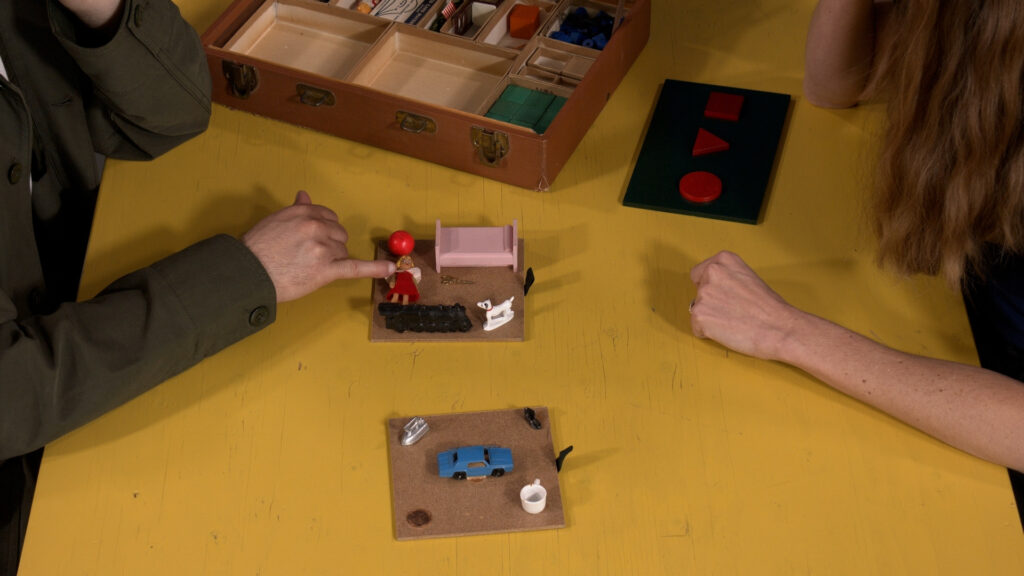
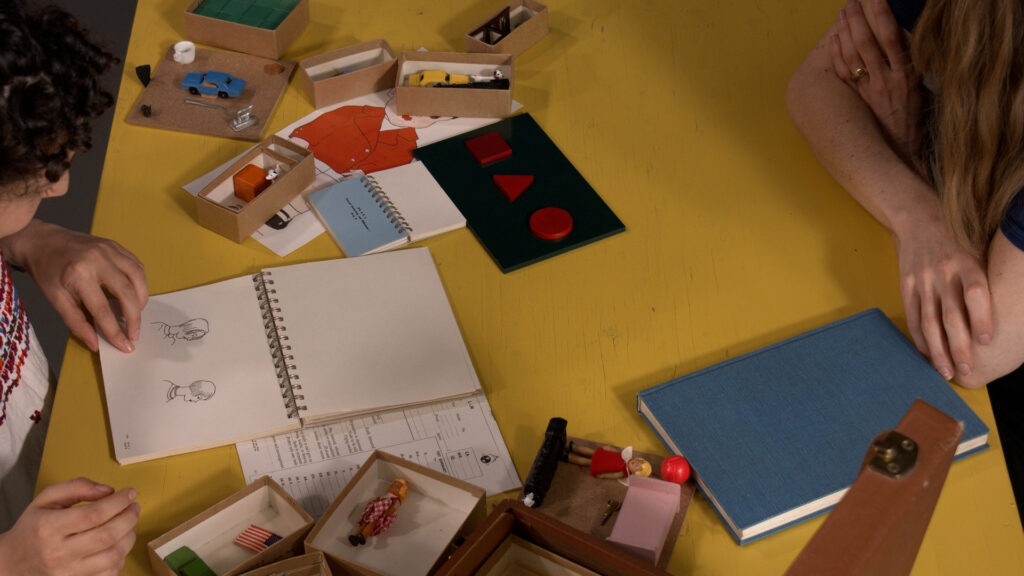
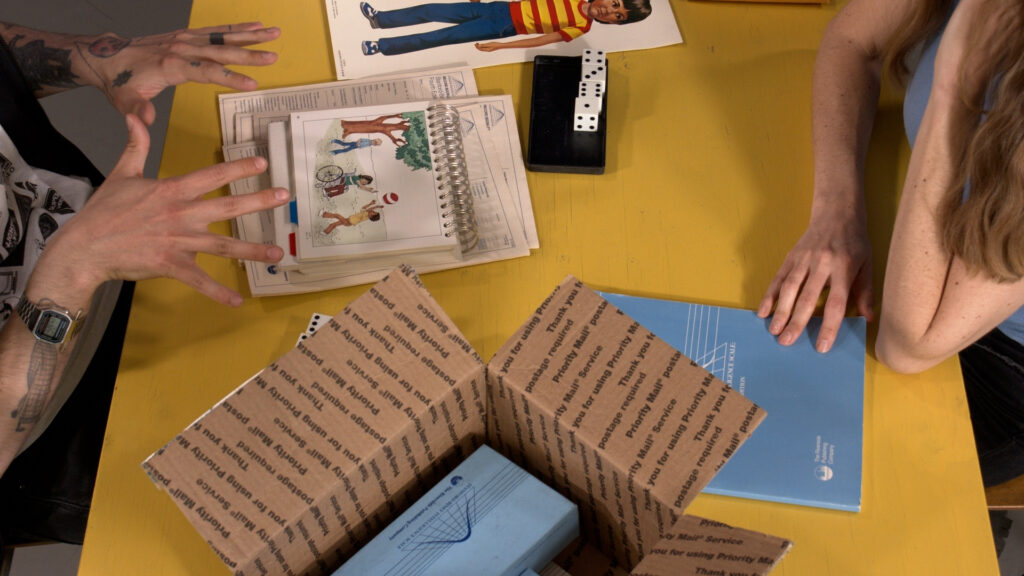
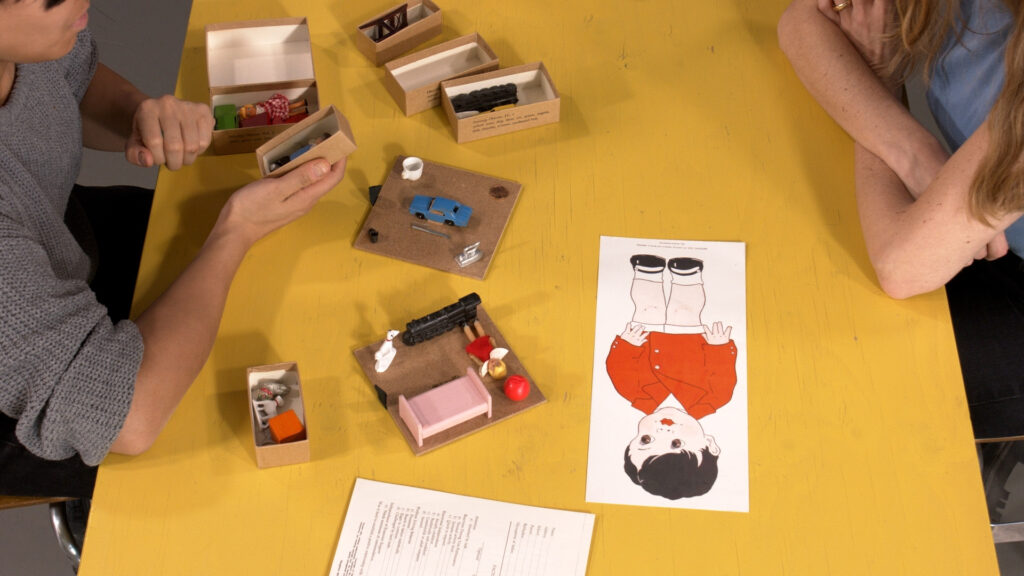
On the Subject of Tests: Opening Boxes, 2022
Video (still)
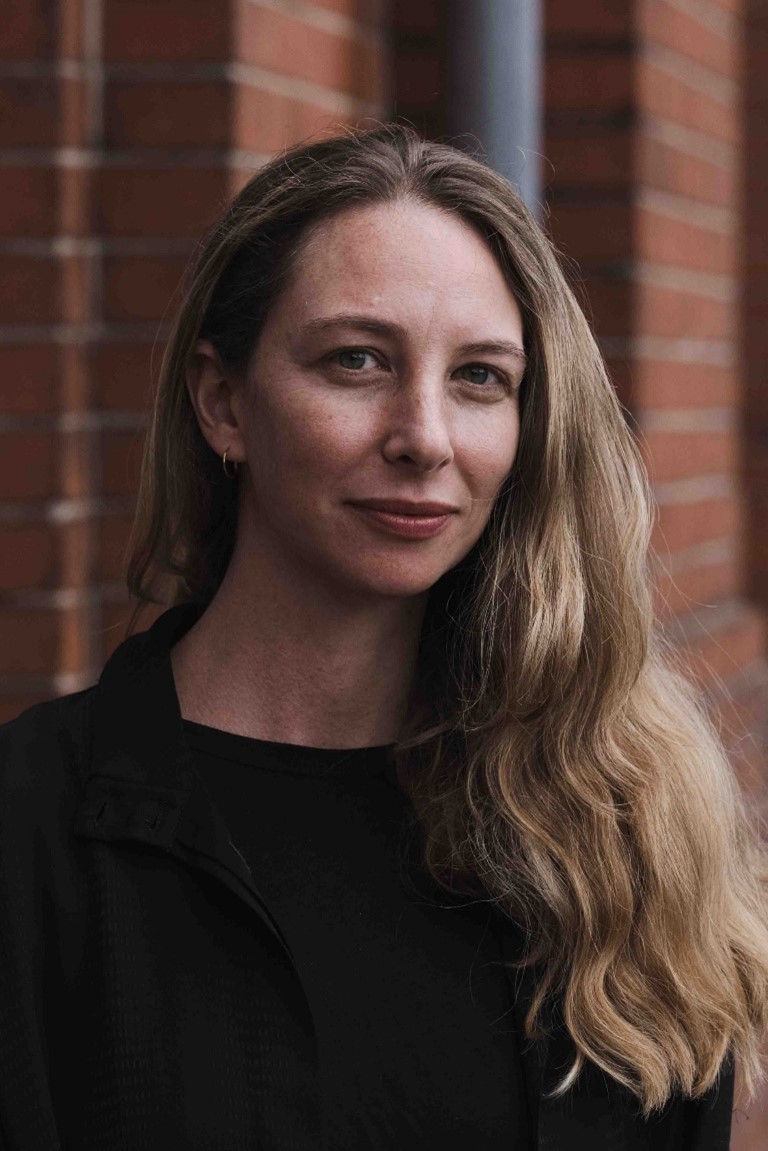
Sasha Bergstrom-Katz
Sasha Bergstrom-Katz is an artist, researcher and writer working in the intersections between the history of science, psychology, cognitive sciences and perception studies. She holds a PhD in Psychosocial Studies at Birkbeck, University of London in Psychosocial Studies and is a visiting postdoctoral researcher at Bielefeld University. Previously, she was a visiting researcher at the Max Planck Institute for the History of Science Berlin and the University of Groningen, Netherlands and in 2021 was a resident fellow at BS-Projects (Hochschule für Bildende Künste Braunschweig, Germany). She has exhibited at the Peltz Gallery, London; Inter Arts Center (IAC), Malmö, Sweden; HBK, Braunschweig; Los Angeles Municipal Art Gallery, Los Angeles, CA; In Lieu, Los Angeles, CA; AWHRHWAR, Los Angeles, CA; Human Resources, Los Angeles, CA and the Torrance Art Museum, Torrance, CA, among others.
Photo by Camille Blake
Indexing Tech for Disability Justice: blocks, boards, plates, shafts & volumes
Categories produce limits. Limits limit our imagination. Imagination is a resource that we need. We find each other by naming ourselves. What do we call it, let’s give it a name. When we go to the trans*crip meeting / club / bar / bookshop / chatgroup / the right doctor / hacking meeting / work session / meetup / class / workshop – we find each other. When we negotiate more space in categories that confine and open up possibility vis-a-vie broken systems – something changes.
This presentation follows the project: Indexing Tech for Disability Justice: blocks, boards, plates, shafts & volumes — negotiating the affordances of naming affinity and sites of embodiminded difference towards an index of technological hir- his – her- story. An Index that would serve an intersectional disability justice tech movement. Moving against a techno- racial- capitalist narrative assuming that people are only users — to be impacted upon and extracted from — this installation works with a series of historical intersectional crip, trans*, BIPoC innovations that shift the terms of what what we think of when we think of technology.
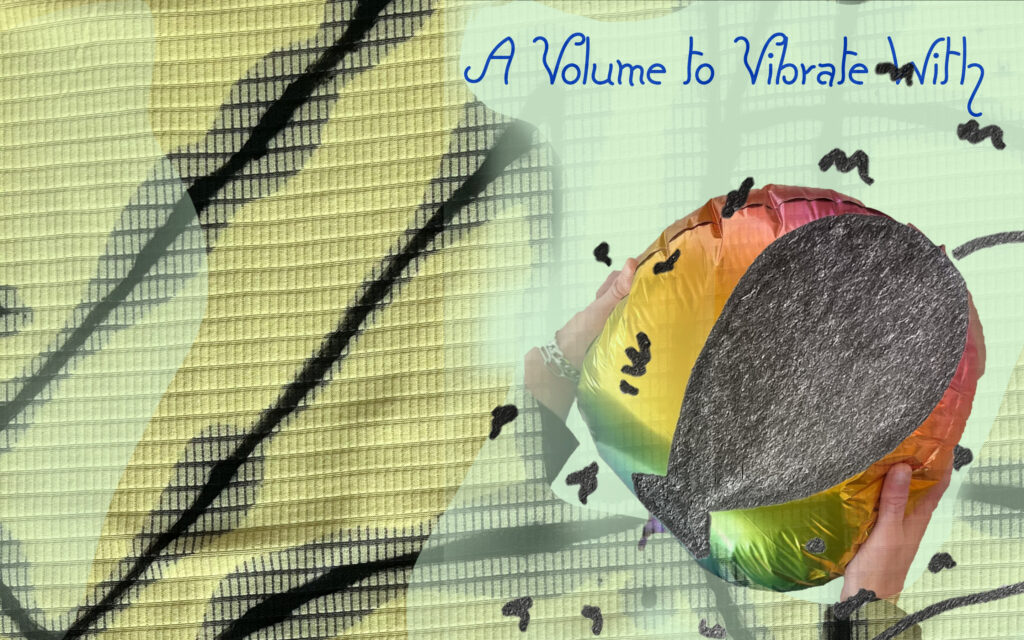
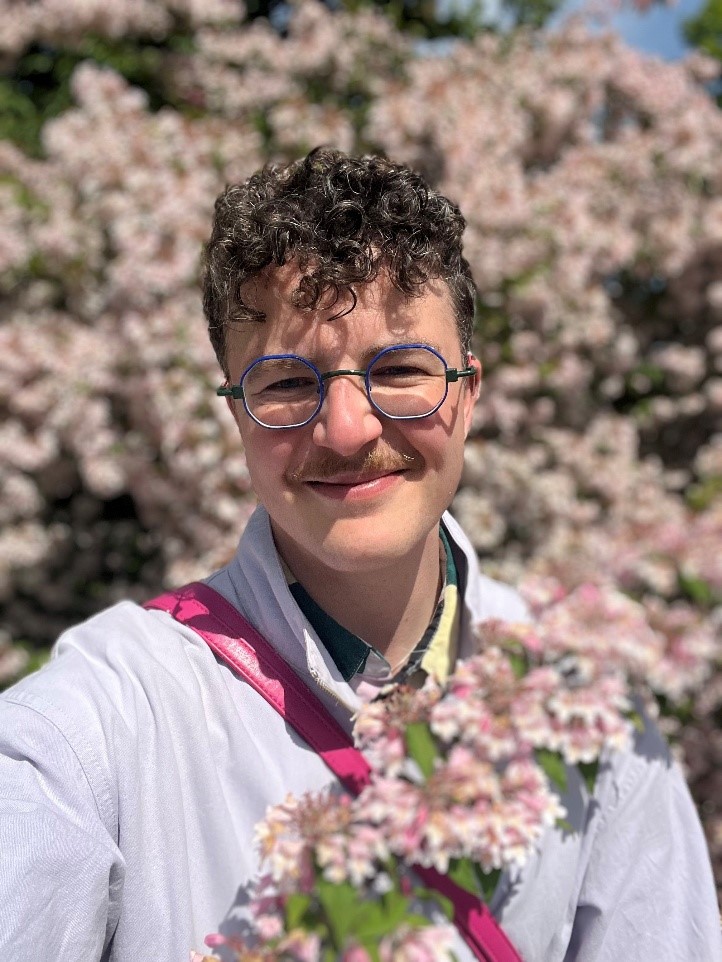
Ren Loren Britton
Ren Loren Britton is a trans*disciplinary artist-designer who reverberates with trans*feminism, technosciences, radical pedagogy and disability justice. Trans*feminist technoscience in their work follows the long wiggle of cyberfeminism; focusing on trans*, as in, transgender and trans*, as in, crossing contexts with feminist concerns. They are interested in the ways that socio technical systems & media makes lives accessible and pleasurable. Departing from the understanding that we live in a deeply ableist white supremacist world to be able to follow a justice oriented direction requires the rethinking and remaking of practices considering the terms of who fits where, at what scale, with what friction (or not) and why. These considerations accompany them with frameworks around disability justice, upholding and valuing all non-normative bodies and minds. Their artistic research is collaborative, engages their community and focuses on the critical technologies. Their work engages community narratives and invents media practices towards connecting non-linear futures, pasts and presents. Their work engaging hir- her- his- torical storytelling: tells otherwise stories about technologies, counter-pathologies and community connection.
Ren has shared artistic work within multiple institutions including ALT_CPH Biennale (Copenhagen), Transmediale & Haus der Kulturen der Welt & Martin Gropius Bau (Berlin), Constant (Brussels), Sonic Acts (Amsterdam), Kunsthalle Osnabrück (Osnabrück), Het Nieuwe Institute & Varia (Rotterdam) & Rupert (Vilnius). Recent academic articles have been published in Catalyst, MATTER and Digital Creativity and within edited volumes by Bloomsbery Academic, Spektor Books and Barbara Budrich.
Website: https://lorenbritton.com/
ERBSENZÄHLER
The project ERBSENZÄHLER (literally: “pea counter”, idiomatically: “bean counter”) explores the increasing quantification and datafication of life through mathematical-technical procedures and systems – from counting and sorting to statistics and computer-aided processes – and the worldview that accompanies them.
It consists of a series of industrial-looking sorting machines in which pea seeds are analyzed, classified, and sorted according to various parameters: from simple, quantifiable features such as weight to more complex ones like color or quality. Each station engages with different aspects of the quantification of life and the history of automation.
In my presentation, I use the ERBSENZÄHLER project as an aesthetic and conceptual lens to reflect on broader questions and make these more tangible: What shifts occur when fundamental human activities like counting, classifying, and sorting are increasingly delegated to machines and “intelligent” systems? In this context, I am particularly interested in the tension that arises when algorithmic decision-making replace subjective, situated, and ambiguous processes of human judgment.
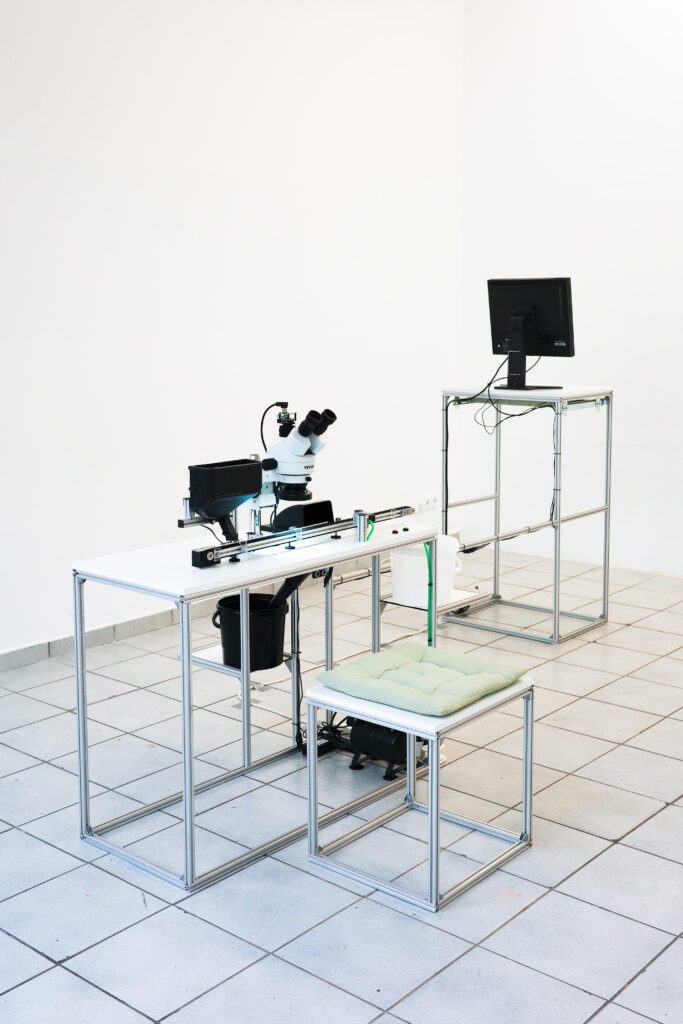
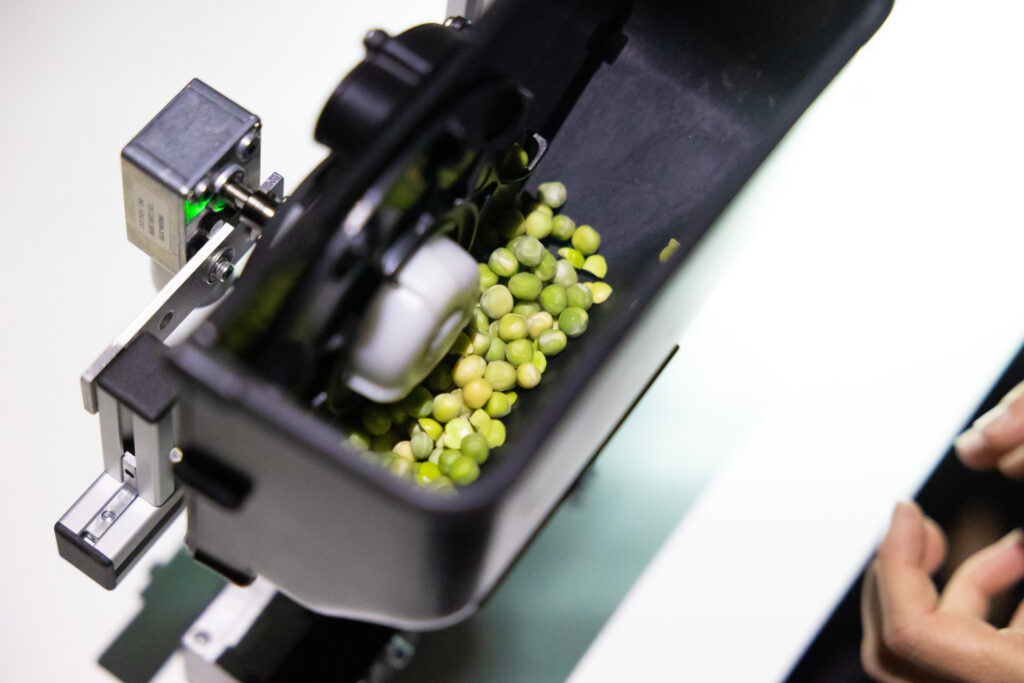
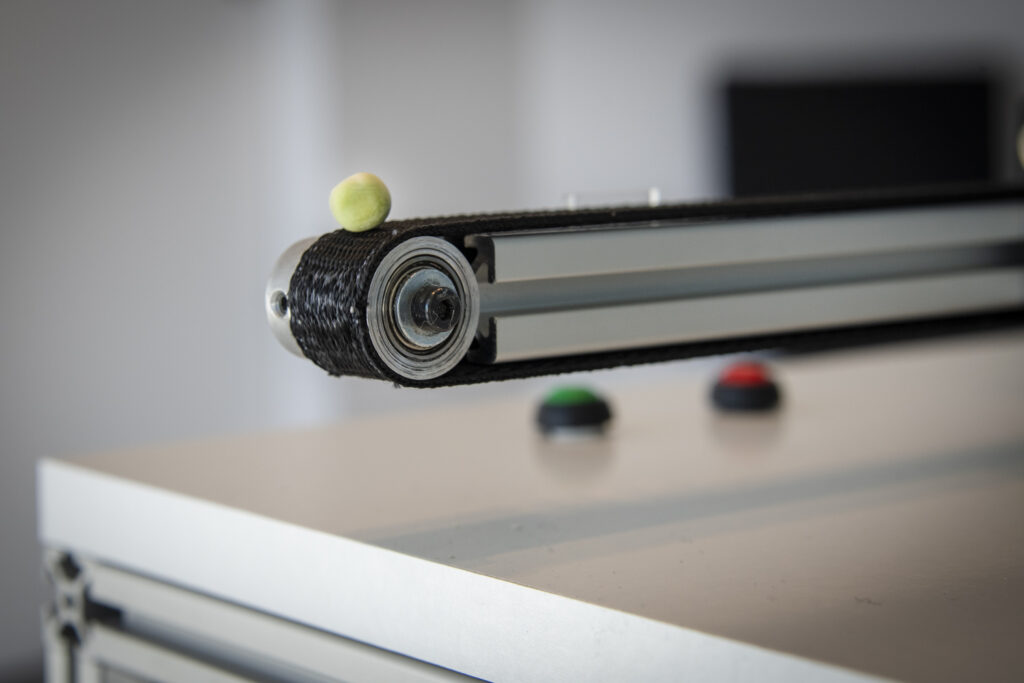
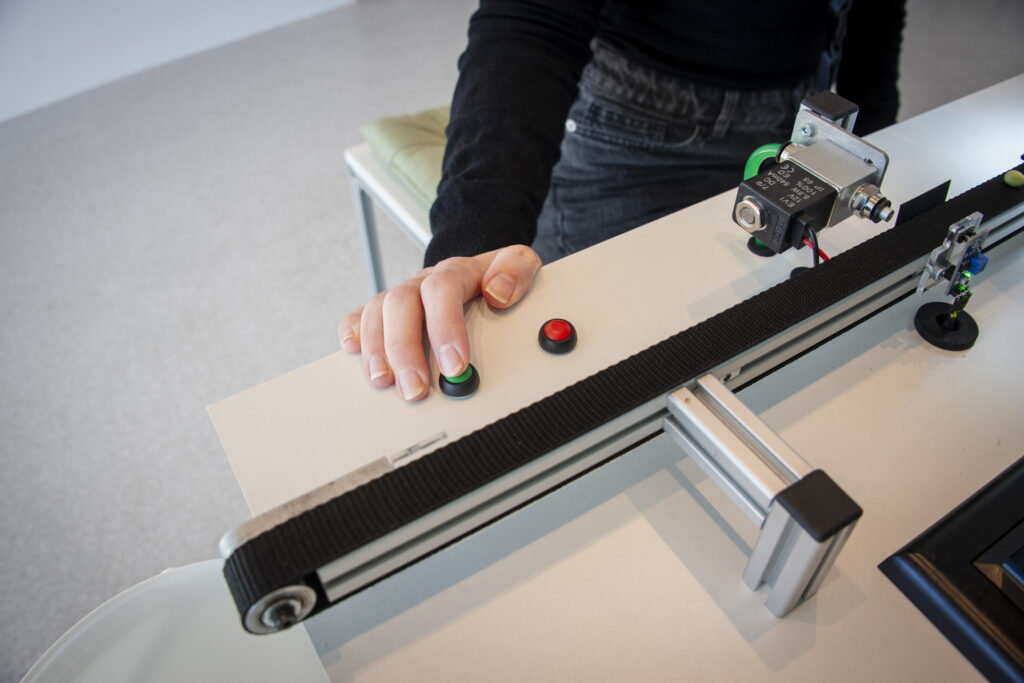
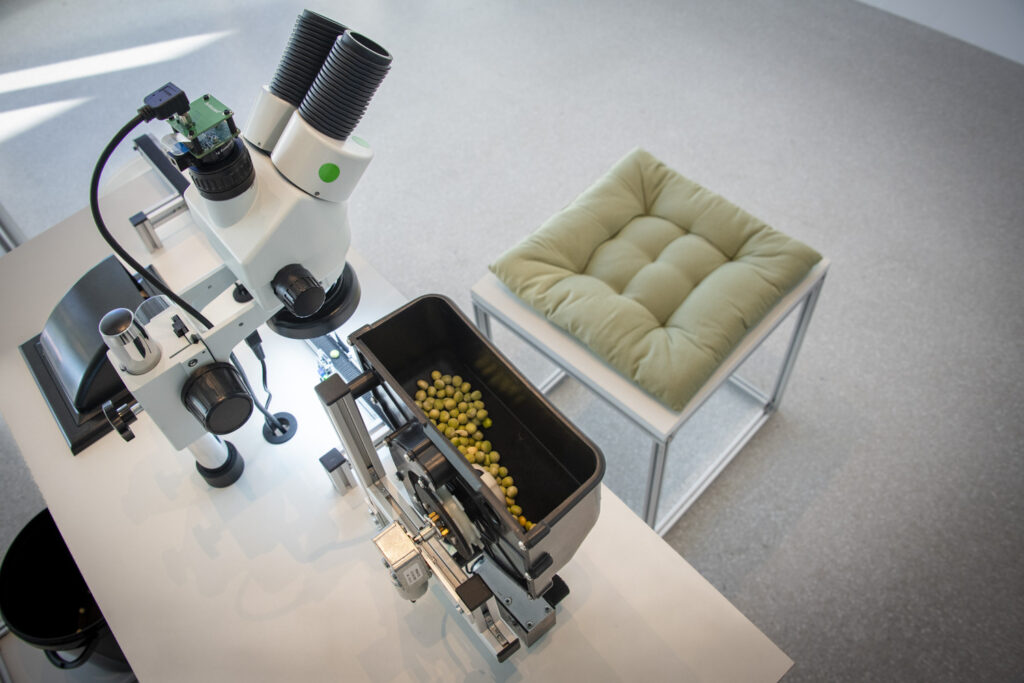
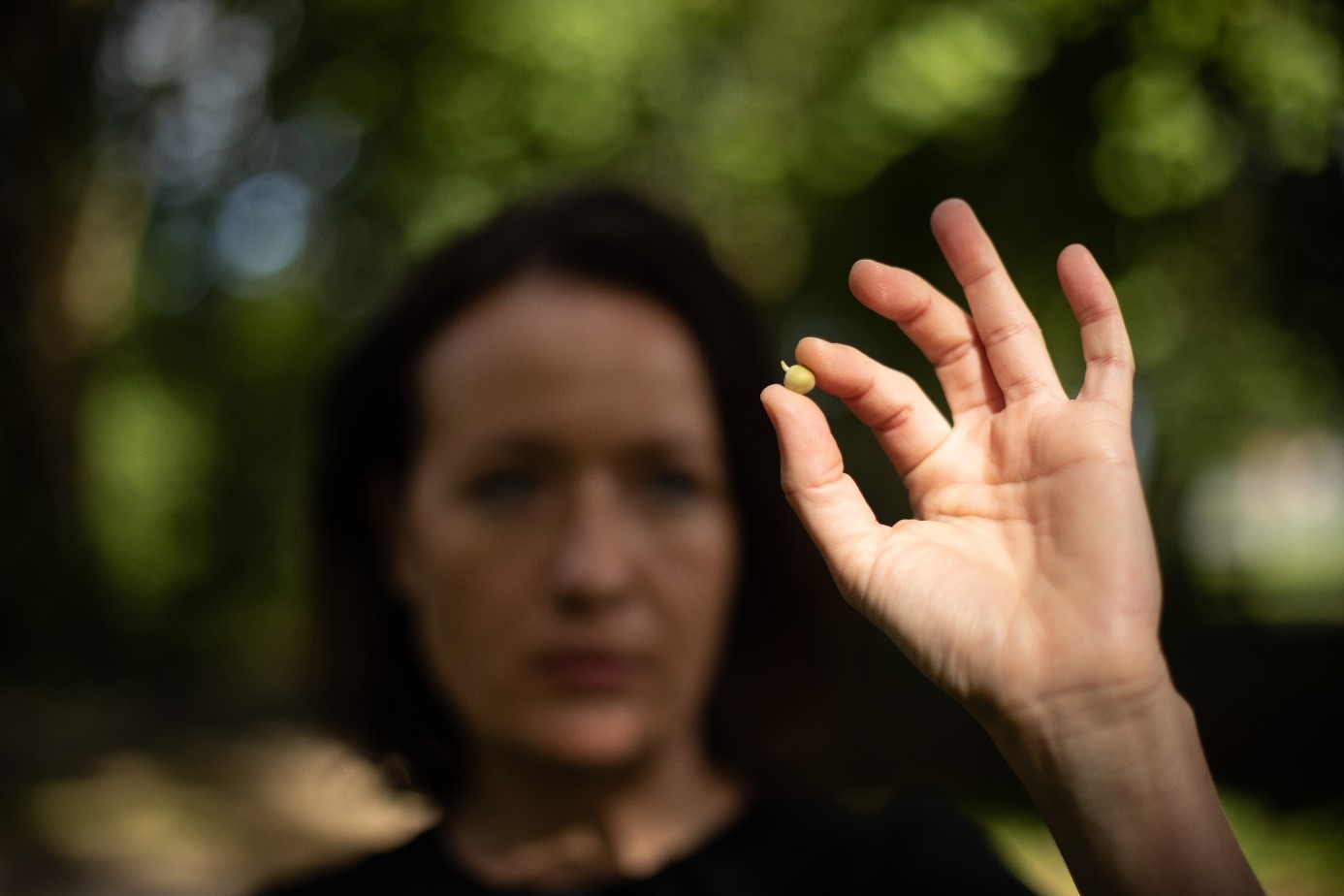
Verena Friedrich
Verena Friedrich is an artist and researcher working at the intersection of art, science, technology, and engineering. In her time-based installations, she blends organic, electronic, and sculptural media to explore the possibilities and limits of technological intervention and control. Drawing from scientific theories and engineering methods, her works often take the form of poetic machines or experimental setups that critically reflect on the technological conditioning of life.
Her projects have been presented internationally in exhibitions, festivals, and conferences, including ZKM Karlsruhe, Nam June Paik Art Center Seoul, New Media Gallery Vancouver, Kapelica Gallery Ljubljana, Ars Electronica Linz, and Chronus Art Center Shanghai. As part of her production processes, she has collaborated with research institutions such as SymbioticA (UWA), the Max Planck Institute for Biology of Ageing (Cologne), and the Laboratory for Stem Cell Bioengineering at EPFL (Lausanne).
Friedrich has received multiple awards and recognitions, including honorary mentions at Prix Ars Electronica and Japan Media Arts Festival, as well as the International Media Award for Science and Art from ZKM.
Website: www.heavythinking.org
Photo by Camilo Pachón – Stiftung Künstlerdorf 2022
Header photo: Sasha Bergstrom-Katz, On the Subject of Tests: Opening Boxes, 2022. Video.
Call for Applications 2026/27
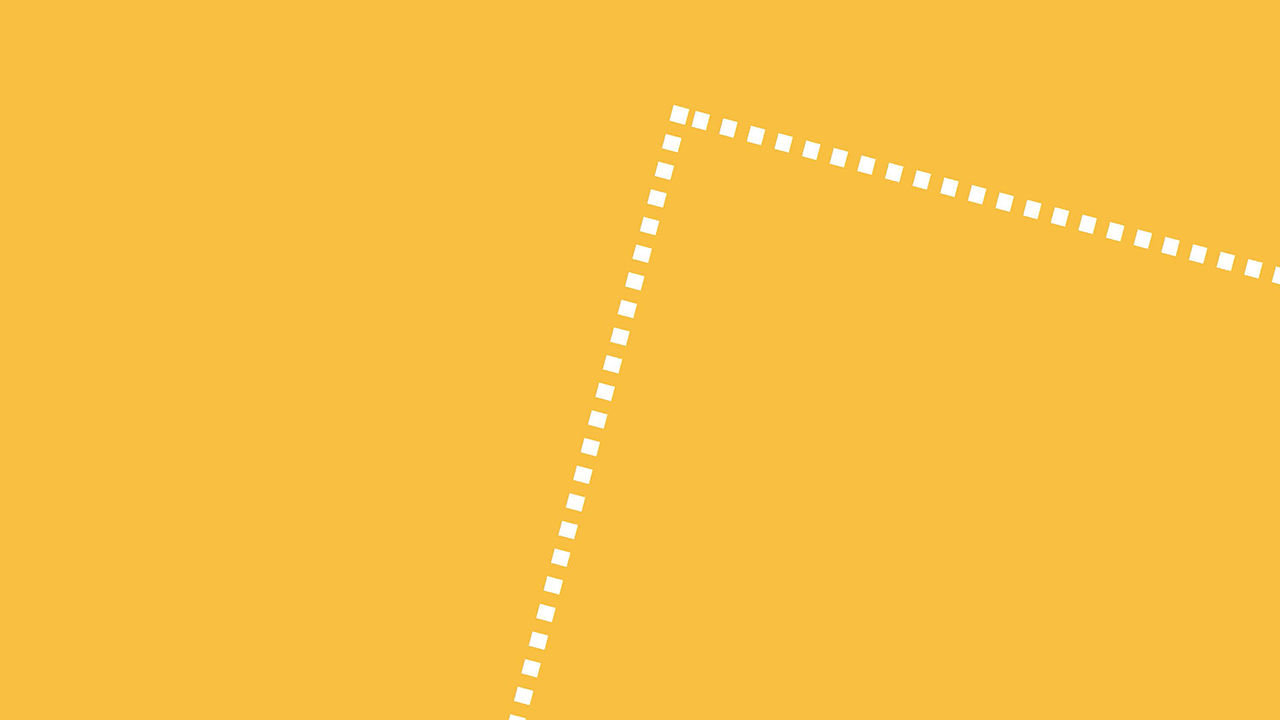
Open call for applications for fellowships (postdoctoral to senior level) starting in October 2026 for up to twelve months, application deadline December 31, 2025.
Fellowships
The Käte Hamburger Kolleg: Cultures of Research (c:o/re) is an international center for advanced studies for history, philosophy, and sociology of science and technology at RWTH Aachen University. It is funded by the German Federal Ministry of Research, Technology and Space. The center invites applications from scholars from the humanities and social sciences, as well as from natural, life, and technical sciences. The focus of the center’s work is on the manifold research cultures within the sciences, their commonalities and differences, and how they are transformed through interdisciplinary discourse. We are particularly interested in exploring the concepts of ‘digitality/complexity’, ‘globality/varieties of science’ and ‘expanded STS’ together with international fellows.
For the year 2026/2027, KHK c:o/re’s research will be centered around the topic of “varieties of science”. Proposals may address
- Studies comparing countries and their respective cultural-institutional contexts in which research is performed
- Methodological approaches of how we can analyze the differences between such cultural-institutional contexts of research
- Studies of a concrete variety of science looking at relevant aspects in the system of knowledge production in a selected country
Participation and contribution to the center
Fellows will join the international center for a maximum period of 12 months (minimum 6 months), starting in October 2026. The fellowships provide a full grant commensurate with applicants’ level of professional experience, working space in fully-equipped offices, logistical support, and access to the interdisciplinary research landscape and research labs at RWTH Aachen University. Fellows who have no other regular income during their fellowship will receive a monthly stipend.
Alternatively, the center can cover costs for a teaching replacement at the fellow’s home institution.
In order to create a stimulating intellectual environment among the resident research community, regular presence at the center and participation in its weekly events are mandatory. Residency in Aachen is required and the center can support fellows in the search for accommodation.
For more information about the fellowship program, please click here.
Location
RWTH Aachen University is one of the largest universities of science and technology in Europe. Located at the borders of Germany, Belgium, and the Netherlands (Euregio), it has close ties with STS institutes at the universities of Maastricht and Liège, and with the neighboring Jülich Research Center, a research campus of more than 5,000 researchers.
See for more information on RWTH Aachen University, visit their website.
Application Modalities
Applications are open to postdoctoral (PhD must be fully completed by the time of application) as well as senior researchers who have already distinguished themselves with outstanding work within the thematic focus of the center. The application (in English) includes the application form (link see below), a cover letter, curriculum vitae, list of publications, a writing sample (in English), and an exposé (max. 3 pages), in which the applicant presents her/his research project and its relation to c:o/re’s research program. An interdisciplinary outlook is advantageous. Please submit your application via our online platform that you find here.
The deadline for applications is December 31, 2025.
Female researchers and scholars from the Global South are particularly encouraged to apply. For further information please visit the FAQs on our website.

Tagungsbericht – Der singuläre Satz
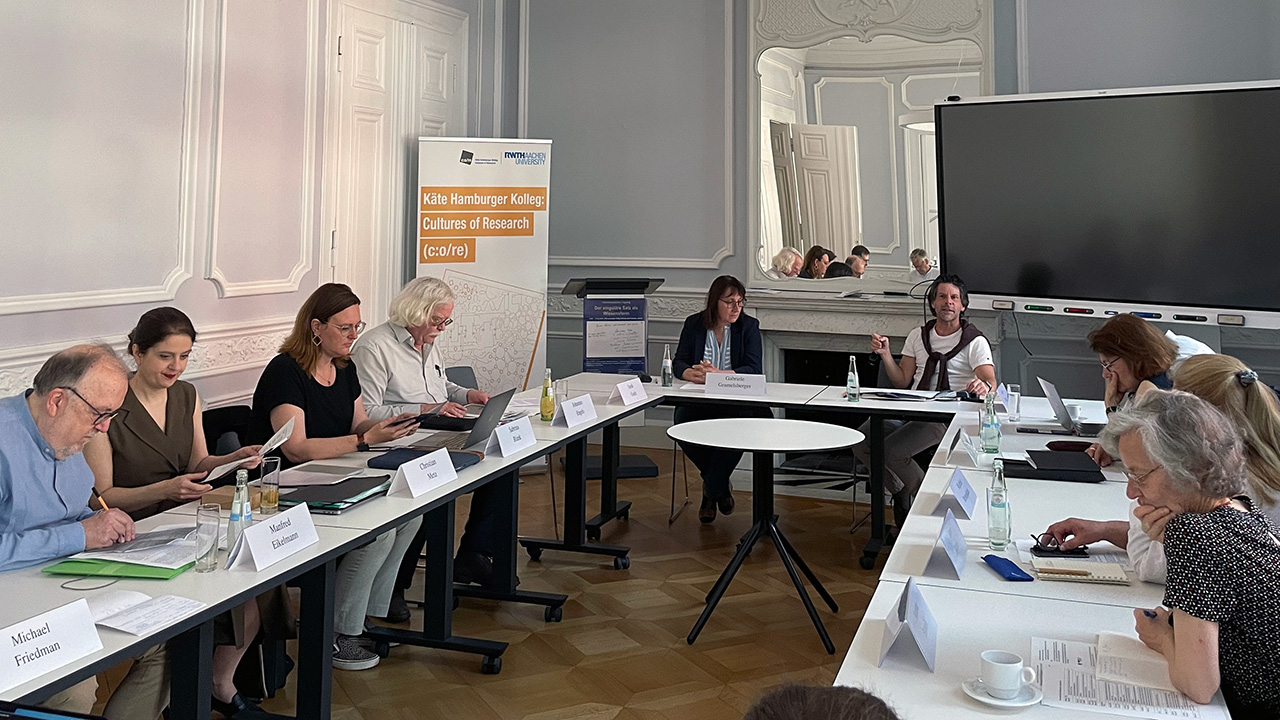
CAROLINE GALLA
Organisatoren: Research Area „Wissenskulturen“ in Kooperation mit dem Käte Hamburger Kolleg: Kulturen des Forschens (c:o/re), RWTH Aachen University
Ort: Käte Hamburger Kolleg: Kulturen des Forschens (c:o/re), Theaterstraße 75, 52062 Aachen
Datum: 11.06.2025–13.06.2025
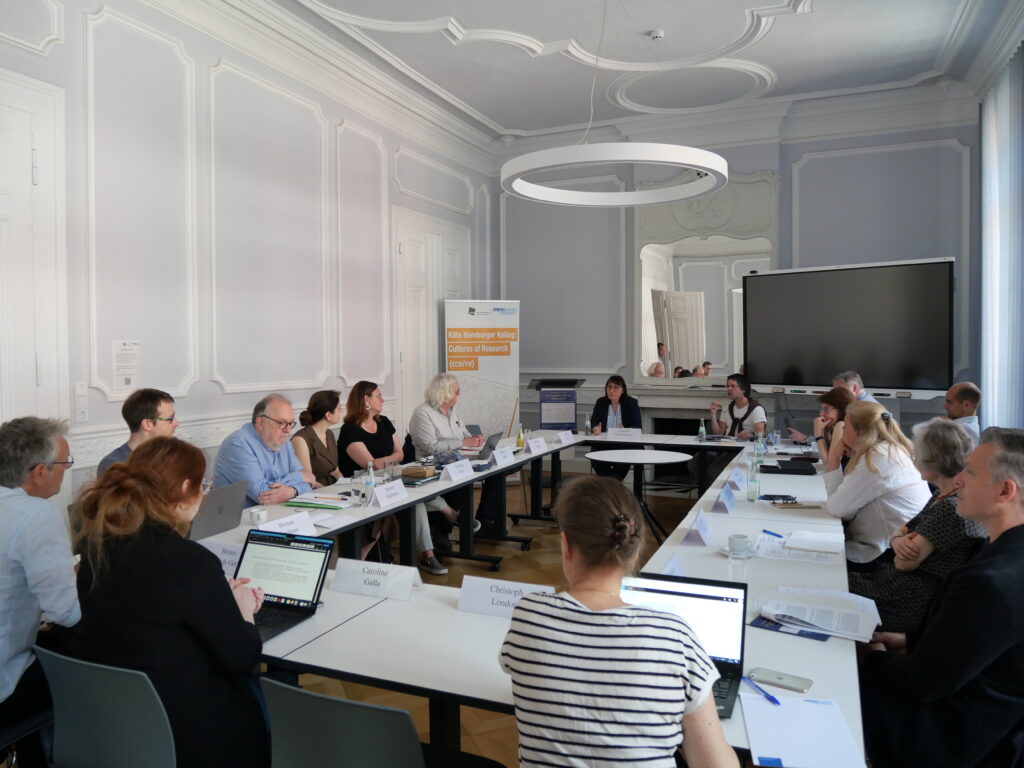
Einzelne singuläre Sätze, als in einem spezifischen historischen Kontext sowie in einem kulturellen und epistemischen Umfeld entstandene, verdichtete Formen und Präsentationen von Wissen, in denen unterschiedliche Wissensfelder und -kulturen in Satzform kulminieren, lassen sich, wie Christian Metz (Aachen), Caroline Torra-Mattenklott (Aachen) und Klaus Freitag (Aachen) in ihrer Einführung darlegten, sowohl über räumliche als auch über zeitliche Grenzen hinweg in verschiedensten Wissenskulturen nachweisen. Ob von Beginn an als Einzelsätze konzipiert oder einem größeren Textzusammenhang entnommen, aus dem sie sich herauslösten und eine eigenständige Zirkulation entfalteten, bildet der singuläre Satz in seinen vielfältigen Formgestalten eine Minimaleinheit kondensierten epistemischen Denkens. Die Sammlung, Zirkulation sowie De- und Rekonstruktion dieser Sätze, ihre Entnetzung und Rekontextualisierung verweisen auf das Potential singulärer Sätze als Transfermedium kollektiver Wissenskulturen. Sie ermöglichen Wissensgenerierung, Wissensdeutungen, Wissensverhandlung sowie Wissenszirkulation, in denen sie ihre Wirkkraft entfalten. Die Vielfalt dieser singulären Sätze, die beispielsweise in Form von Apophthegmata, Gnomen, Sentenzen, Glaubenssätzen, Protokollsätzen, Elementarsätzen oder Kernsätzen ihren Ausdruck finden, aus einer epochen- und disziplinübergreifenden sowohl wissenstheoretischen als auch wissenshistorischen Perspektive zu beleuchten, bildete das Anliegen dieser dreitägige interdisziplinär angelegten Tagung.
Die erste Sektion der Tagung suchte den singulären Satz als prägnante Form zu konturieren. Die formalen Merkmale singulärer Sätze, die zu deren Memorabilität und Prägnanz beitragen, suchte Winfried Menninghaus (Berlin) exemplarisch anhand von Sprichwörtern – als paradigmatischen Formen des singulären Satzes –, von Werbeslogans, humoristischen Zweizeilern sowie lyrischen Texte aufzuzeigen. Singuläre Sätze vereinten demnach eine hypernormative prosodische, morphologische und syntaktische Ordnungsstruktur, die sich insbesondere in der Häufung von Parallelismen auf der Ebene von Metrum und Reim manifestiere, mit einer ebenso hypernormativen Unordnungsstruktur, etwa in Form grammatischer Devianzen wie dem Fehlen mandatorischer Satzglieder. Diese Interaktion von Ordnung und Chaos bildet zwei Seiten einer spezifischen Poetik, deren wechselseitige Spannung entscheidend zur ästhetischen Wahrnehmung und kognitiven Verarbeitbarkeit singulärer Sätze beitrage. Darüber hinaus wiesen singuläre Sätze eine ausgeprägte Bildlichkeit aus. Dabei hätten empirische Studien zur Wahrnehmung und zu den Effekten dieser Merkmale singulärer Sätze auf kognitive Verarbeitungsprozesse, Abspeicherung sowie affektive und ästhetische Bewertungen gezeigt, dass insbesondere die von Selektivität geprägte kognitive Rezeption von Devianzen die Validität dieser singulären Sätze verstärke.
Eine ausführliche Analyse der singulären Sätze als semantisch verdichtete Formeln in Georg Christoph Lichtenbergs Marginalien und Sudelbüchern bot Elisabetta Mengaldo (Padua). Die kurzen, teils miteinander verschränkten Paragraphen, wie sie sich in Lichtenbergs Sudelbüchern manifestierten, zeichneten sich nicht nur durch aphoristische Kürze und Präzision im Sinne des antiken Ideal der virtus narrationis der brevitas aus, sondern hätten darüber hinaus zur Ausbildung eines neuen epistemischen Genres des Aphorismus innerhalb der wissenschaftlichen Lehr- und Forschungskultur – avant la lettre – beigetragen. Die textuelle Verdichtung der in den Sudelbüchern entstehenden Aphorismen sei als prozessuale Genese eines neuen Paradigmas für Erkenntnisprozesses zu verstehen, das nicht allein memotechnischen oder schreibökonomischen Zwecken diene, sondern zugleich durch die Verwendung von neuen topoi, die sich aus der Tradition der loci communes der Commonplace books herausentwickelten,eine poetische Funktion erfülle. Diese erwachse aus der produktiven Verschränkung zweier Diskursformen: der ars inveniendi und der Experimentalphysik mit ihrer Reflexion der eigenen Beobachtung.
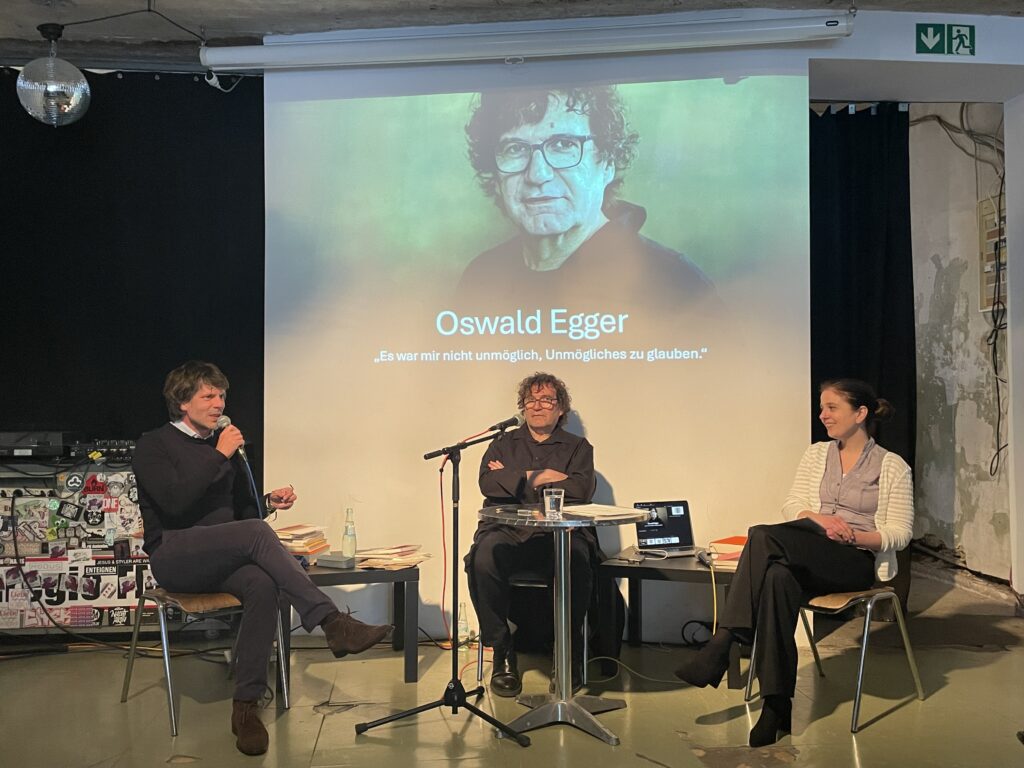
Mit einem wissenschaftstheoretischen und -philosophischen Überblick über die in den 1930er Jahren einsetzende Protokollsatzdebatte innerhalb des Wiener Kreises, die sich mit der Frage der Übersetzung von empirischen Beobachtungen in intersubjektiv nachvollziehbare singuläre Sätze, ihrer Form sowie ihrem universalem Geltungsanspruch befassten, leitete Gabriele Gramelsberger (Aachen) die zweite Sektion ein, die sich der Epistemologie mathematischer und physikalischer Einzelsätze widmete. Singuläre Sätze seine sowohl in der Wissenschaft als auch in der Philosophie zentrale Elemente der Generierung deklarativen, propositionalen Wissens, das sich über Sprache und Logik artikuliert. Die zwischen Rudolf Carnap und Otto Neurath ausgelöste sprachanalytisch beeinflusste Diskussion rund um den Protokollsatz und seinen Status, seien rund um den Status einer „Universalsprache“ der Wissenschaft ausgebrochen, die zum Ziel hatte, die quantitativ bestimmbaren und empirisch beobachtbaren Wahrnehmungsbefunde der Protokollsätze in physikalische Sätze und somit in eine Universalsprache zu überführen, welche keiner hermeneutische Vermittlung bedürfe.

Inwiefern die philosophische Reflexion über mathematischen Elementarsätze als atomare semantische Einheiten in Hans Blumenbergs philosophischen Schriften Ausdruck fanden, beleuchtete Michael Friedman (Bonn) anhand einer Untersuchung von Blumenbergs Kapitel „Im Fliegenglas“ aus seinem 1989 erschienenen Werk „Höhlenausgängen“ sowie seiner Notizen und Karteikarten zu seinem Exemplar von Wittgensteins „Bemerkungen über die Grundlagen der Mathematik“ (BMG), das im Deutschen Literaturarchiv Marbach überliefert ist. In Blumenbergs Werk vollziehe sich eine Auseinandersetzung mit Wittgensteins Philosophie der Mathematik, insbesondere mit der Frage nach der Form, Funktion und epistemischen Offenheit mathematischer Grundsätze, die Blumenberg als „kontrollierte Mehrdeutigkeit“ definierte. Dies verdeutliche sich an dem zum Ende von Blumenbergs Kapitel „Im Fliegenglas“ angeführten geometrischen Rätsel zum Rechteck, das er Wittgensteins BMG entnimmt, und das Blumenberg als Veranschaulichung „kontrollierter Mehrdeutigkeit“ mathematischer Rätsel und Elementarsätze zu ergebnisoffenen Prozessen der begrifflichen Neudefinierung diene.
Der epistemischen Rolle der Sprache in der Konstruktion naturwissenschaftlicher Erkenntnisse ging Arianna Borrelli (Berlin/Aachen) am Beispiel der ästhetischen Genese, Durchsetzung und Erweiterung des Energieerhaltungssatzes im Austausch mit anderen Wissensnetzen nach, der als Muster für spätere Erhaltungssätze diente. Ausgehend vom Streit zwischen Leibniz und Papin im 17. Jahrhundert um das wahre Maß der Kraft, die in der Natur erhalten bleibe, lasse sich zeigen, dass der Satz zunächst als sprachlicher Ausdruck eines noch nicht mathematisierten Naturprinzips fungiert habe, das von beiden in unterschiedliche messbare Größen überführt worden sei. Mit der Entwicklung der klassischen Mechanik im 18. Jahrhundert sowie im Zuge von Industrialisierung und der Standardisierung von Messverfahren im 19. Jahrhundert habe sich die Form des Erhaltungssatzes entsprechend der Entwicklung naturphilosophischer, religiöser, naturwissenschaftlicher und wirtschaftlicher Wissenskulturen im Rahmen eines epistemischen Transfers von der Vorstellung „Kraft“ hin zur Konzeption „Energie“ gewandelt und zum übergeordneten Naturprinzip des Energieerhaltungssatzes verdichtet. Dieser habe mit dem Aufkommen der Quantenphysik und der Allgemeinen Relativitätstheorie zu Beginn des 20. Jahrhunderts neue Impulse erhalten. Seine epistemische Autorität habe sich dabei nicht allein aus empirischer Gültigkeit ergeben, sondern auch aus seiner semantischen Wandlungsfähigkeit und Anschlussfähigkeit an verschiedene Wissenskulturen, die durch die Flexibilität der Sprache eine Verbindung zwischen Wissensfeldern sowie die Überführung in mathematische und messbare Größen ermöglicht habe.
Die dritte Sektion suchte die Kompilation, Kontextualisierung und Vernetzung singulärer Sätze in ihren jeweiligen Umfeldern aufzuzeigen und wurde von Dr. Christian Kaiser (Bonn) eröffnet, der eine Analyse der Funktion singulärer philosophischer Sätze in mittelalterlichen, für die Universitätslehre bestimmten medizinwissenschaftlichen Werken am Beispiel des an der Wende zum 14. Jahrhundert verfassten Conciliator differentiarum philosophorum et praecipue medicorum des Petrus von Abano präsentierte. Demnach zeige sich anhand unterschiedlicher, aus antiken und frühmittelalterlichen Werken stammender naturphilosophischer, metaphysischer, moralphilosophischer und politiktheoretischer Einzelsätze, die als wissenschaftliches Fundament, als selbstständige Lehrsätze oder als Glaubensbekenntnisse in den medizinischen Schriften Verwendung gefunden hätten, dass das Zitieren dieser Sätze ein zentrales methodisches Element innerhalb wissenschaftlicher Abhandlungen dargestellt habe. Sie hätten dabei weniger als zentrale exempla, sondern vielmehr als situationsspezifisches Sampling fungiert, das in die wissenschaftliche textura eingewoben worden sei. Referenzen und Zitate seien dabei weit über eine bloße Indienstnahme von Autoritäten hinausgegangen und hätten – vor dem Hintergrund des Streits der Fakultäten und der Frage nach dem Wissenschaftsanspruch der Medizin – den Prozess der Formierung eines universitären medizinischen Wissensdiskurses und Machtanspruches unterstützt. Dieser habe sich zunehmend zu einem „Wissenskult“ verdichtet und das ärztliche Handeln sowie die medizinische Gelehrsamkeit in ein von anderen universitären Disziplinen mitgetragenes Wissensnetz bzw. Weltbild eingebettet.
Manfred Eikelmann (Bochum) richtete den Blick auf die Wissenspraktiken in den Apopthegmata des Erasmus von Rotterdam (1531) und ihrer ersten deutschen Übersetzung durch Heinrich von Eppendorf (1534), die zu Beginn der Frühen Neuzeit zu einer selbstständigen Wissensform avancierten und von einer humanistischen Wissenskultur zeugten, in der durch die Rezeption antiker Aussprüche Erfahrungs- und Weltwissen generiert wurde. Dabei handele es sich bei den Apophthegmata um eine rhetorische wie epistemische Kleinform, die als Transfermedium antiken Erfahrungswissens fungiere und das Ziel verfolge, sprachliche wie epistemische Tugenden zu kultivieren. Die einzelnen Aussprüche, oftmals okkasionelle Sprechakte in konkreten sozialen und politischen Situationen, transportierten in prägnanter Weise moralisches, praktisches und insbesondere sprachliches Handlungswissen. In epistemischer Hinsicht fungierten die Apophthegmata als Topoi, die Wissensbestände speicherten und diese nicht nur erinnerbar, sondern auch rekontextualisierbar und über Register vielfältig vernetzbar machten.
Mit einem Vortrag zu den Anfangsformeln des in der westafrikanischen Hone-Sprache entworfenen Storytellings eröffnete Anne Storch (Köln) die letzte Sektion, die Ästhetik, Politik und Wirkkraft singulärer Sätze in den Blick nahm. Im Zentrum stand dabei der erste Satz einer Erzählung, der nicht nur als singulärer Auftakt fungiere, sondern eine mimetische Wirkkraft entwickle, durch die Erzählung als verkörpernde-performative Handlung erfahrbar werde. Der erste Satz einer Erzählung wirke dabei als besonders markierter Anfang, der einen neuen liminalen Raum eröffne, und zugleich als Teil einer Tradition permanenter Re-Kontextualisierung, in der das Gesagte stets überschrieben werde. So bilde der erste Satz – etwa in der parallelistische Formel „My story killed one, killed one, killed one“ – eine Art ritualisierte Schwelle, die zwischen Sichtbarem und Unsichtbarem, Gegenwart und Erinnerung, Erinnerung und Vergessen vermittele. In diesen plurilingualen, liminalen Erzählräumen erscheine Sprache selbst als Medium der Brechung, der Übersetzung und der Transformation, der Beziehung und der Subjektivierung.
Sabrina Blank (Aachen) gewährte in ihrem Vortrag einen Einblick in die Genese, Tradierung und autoritativen Wirkkraft des singulären Rechtsatzes zur päpstlichen Prärogative der Nichtjudizierbarkeit, der sich im Laufe des Früh- und Hochmittelalters als prägnante rechtliche Formulierung herausbildete, die nicht nur zunehmend normative Geltung beanspruchte, sondern auch Autorität generierte. Die früheste Erwähnung dieses Satzes, der schließlich auf dem Weg der traditio im Codex Iuris Canonici (CIC) von 1917 festgeschrieben wurde, finde sich im Constitutum Silvestri, einer im Kontext der krisenhaften Kontingenzerfahrung der umstrittenen Papstwahl des Symmachus an der Wende des 5. zum 6. Jahrhunderts als Instrument der Stabilisierung der päpstlichen Stellung entstandene und von der jüngeren Forschung als verfälscht identifizierte Synodalakte. Über private Rechtskompilationen gelangte der Satz im 9. Jahrhundert ins fränkische Reich, wo er – etwa bei Hinkmar von Reims – bereits als geltendes Recht rezipiert wurde. Im Verlauf der Papstschismen des 12. Jahrhunderts avancierte er zunehmend zur tragenden Rechtssatz päpstlicher Legitimationsstrategien, die in das Papstwahldekret des Dritten Laterankonzils mündeten.
Der komplexen und mehrstufigen Genese und Wirkkraft des Kanons sentenzenhafter Aussprüche der Sieben Weisen und ihrer Tradierung widmete sich Johannes Engels (Köln). Die aus dem archaischen Hellas stammenden Weisheits-, Lern- oder Sinnsprüche zeichneten sich durch Kürze und Prägnanz aus; sie enthielten Bildungs- und Weltwissen in generalisierter und verdichteter, leicht memorierbarer Form und verdichteten alltagstaugliche Lebensweisheiten in leicht movierbarer Gestalt. Diese Sätze seien keiner philosophischen Schule entsprungen, sondern könnten Akteuren mit politischer und sozialer Wirkkraft innerhalb ihrer Polis zugeschrieben werden. Ihre Kanonisierung sei dynamisch verlaufen und habe sich stark lokal geprägt gezeigt. Diese Aussprüche, deren Autorität in der Zustimmbarkeit bzw. Zusprechbarkeit des in ihnen enthaltenen Gemeinsinns im Sinne eines common sense gelegen habe, hätten sich über ihre Rezeption in Sammlungen bereits seit dem späten 4. Jahrhundert v. Chr. bis ins 21. Jahrhundert durchgesetzt und auch in bildlichen Darstellungen ihren Niederschlag gefunden.
Die Vielfalt der Beiträge haben gezeigt, wie gewinnbringend ein interdisziplinärer Zugriff auf das Verständnis der Form, der Funktion und Epistemologie singulärer Sätze sein kann. Durch die unterschiedlichen Perspektiven wurde deutlich, dass singuläre Sätze als verdichtete Denkformen, nicht allein als prägnante und memorable Minimaleinheiten auftreten, sondern auch als epistemische Kristallisationspunkte, die in verschiedensten Wissenskulturen eine tragende Rolle für die Generierung, Zirkulation und Rezeption von Wissen spielen. Die Abschlussdiskussion machte deutlich, dass die Relevanz singulärer Sätze weit über ihre semantische Verdichtung hinausreicht: Ihre illokutionäre Kraft, ihre Funktion im Rahmen von gesellschaftlicher Stabilisierung oder Kritik sowie ihre Rolle als Transfermedien zwischen unterschiedlichen Wissensfeldern rückten ebenso in den Fokus wie Fragen nach der Terminologisierung, der Metaphorizität und der stilistischen Konstruktion. Insbesondere in der Spannung zwischen epistemischer Verdichtung und erklärungsbedürftiger Obskurität, zwischen universellem Geltungsanspruch und kultureller Situiertheit wurde deutlich, dass der singuläre Satz als Gegenstand nicht nur der historischen und systematischen Analyse bedarf, sondern zugleich Anlass zu metareflexiven Überlegungen über die Narrativität des Satzes gibt. Dabei offenbarte sich die Form des singulären Satzes als ambivalent und erklärungsbedürftig – sowohl innerhalb einzelner Disziplinen als auch in ihrer historischen Kontextualität und sprachlichen Ausformung.
Konferenzübersicht:
Christian Metz, Caroline Torra-Mattenklott, Klaus Freitag (Aachen): Der singuläre Satz als prägnante Form
Sektion I: Der singuläre Satz als prägnante Form
Winfried Menninghaus (Berlin): Drei Faktoren memorabler Einzelsätze
Elisabetta Mengaldo Elisabetta Mengaldo (Padua): Sätze als verdichtete Formeln. Lichtenbergs Marginalien und seine Sudelbücher
Lesung und Gespräch von und mit Oswald Egger
Sektion II: Epistemologie mathematischer und physikalischer Einzelsätze
Gabriele Gramelsberger (Aachen): Protokollsatzdebatte – Überprüfbare singuläre Sätze
Michael Friedman (Bonn): Blumenberg, Wittgenstein und (mathematische) Elementarsätze
Arianna Borrelli (Aachen/Berlin): Erhaltungssätze: Die Rolle der Sprache in der Konstruktion naturwissenschaftlicher Erkenntnis
Sektion III: Singuläre Sätze und ihr Umfeld: Kompilation, Kontextualisierung, Vernetzung
Christian Kaiser (Bonn): Die Methodik des Samplings philosophischer Einzelsätze in medizinischen Quaestiones des Mittelalters
Manfred Eikelmann (Bochum): Denkwürdige Spruchszenen. Wissenspraktiken in den Apophthegmata des Erasmus von Rotterdam und ihrer ersten deutschen Übersetzung (1531- 1535, 1534)
Sektion IV: Ästhetik, Politik und Wirkkraft singulärer Sätze
Anne Storch (Köln): Der Satz, der am Anfang ist
Sabrina Blank (Aachen): Von der Fälschung zum legitimierten Rechtsanspruch des Papstes: Die Tragweite des singulären (Grund-)Satzes der päpstlichen Nichtjudizierbarkeit im Mittelalter
Johannes Engels (Köln): Die Sentenzen der Sieben Weisen des antiken Griechenlands als ein Beispiel epochen-übergreifend einflussreicher ‚singulärer Sätze‘
, Fotos von Jana Hambitzer
Cancellation: Digital Complexity: De-Anthropological Trends in Computing, AI, and Robotics by Gabriele Gramelsberger
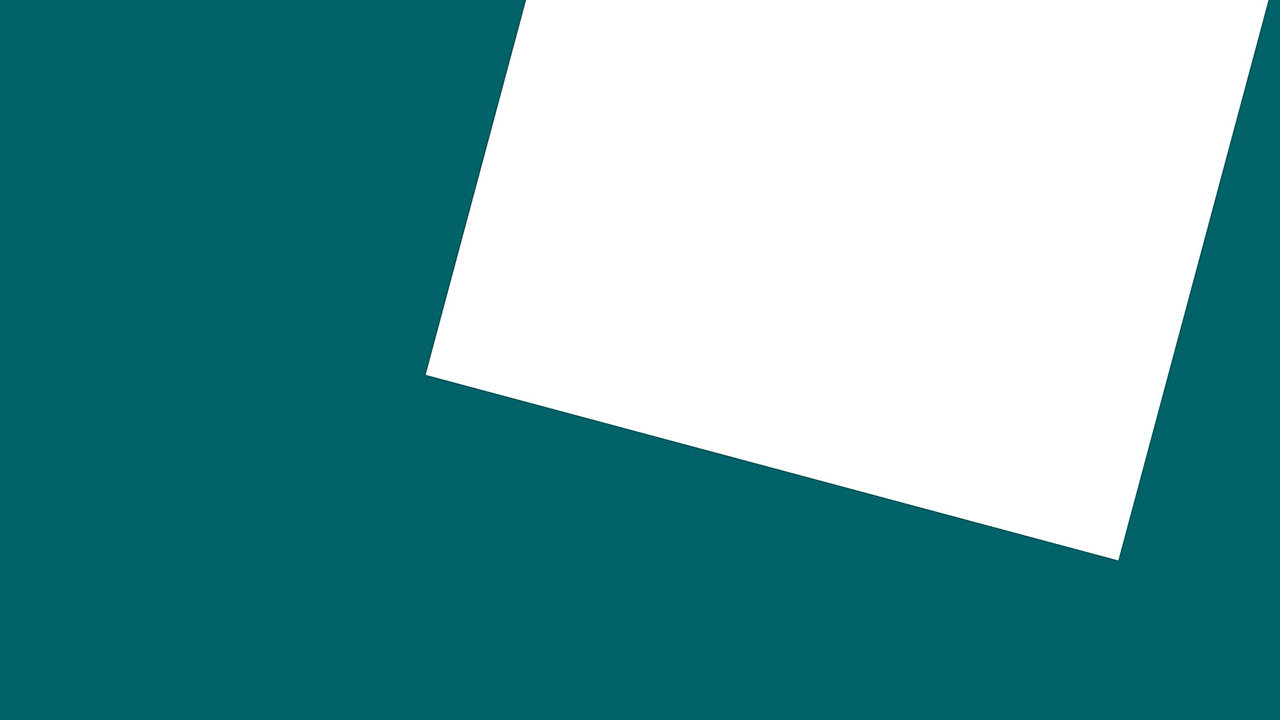
‼️ Unfortunately, tonight’s lecture by Gabriele Gramelsberger has to be canceled due to illness.
We hope to see you next week for Anna Tuschling’s lecture on “Digitality as a Triad: From the Love Letter to Emotion AI”.
“The question of academic freedom acts as a seismograph for current processes of change in the production of scientific knowledge” – Interview with Gabriele Gramelsberger and Stefan Böschen
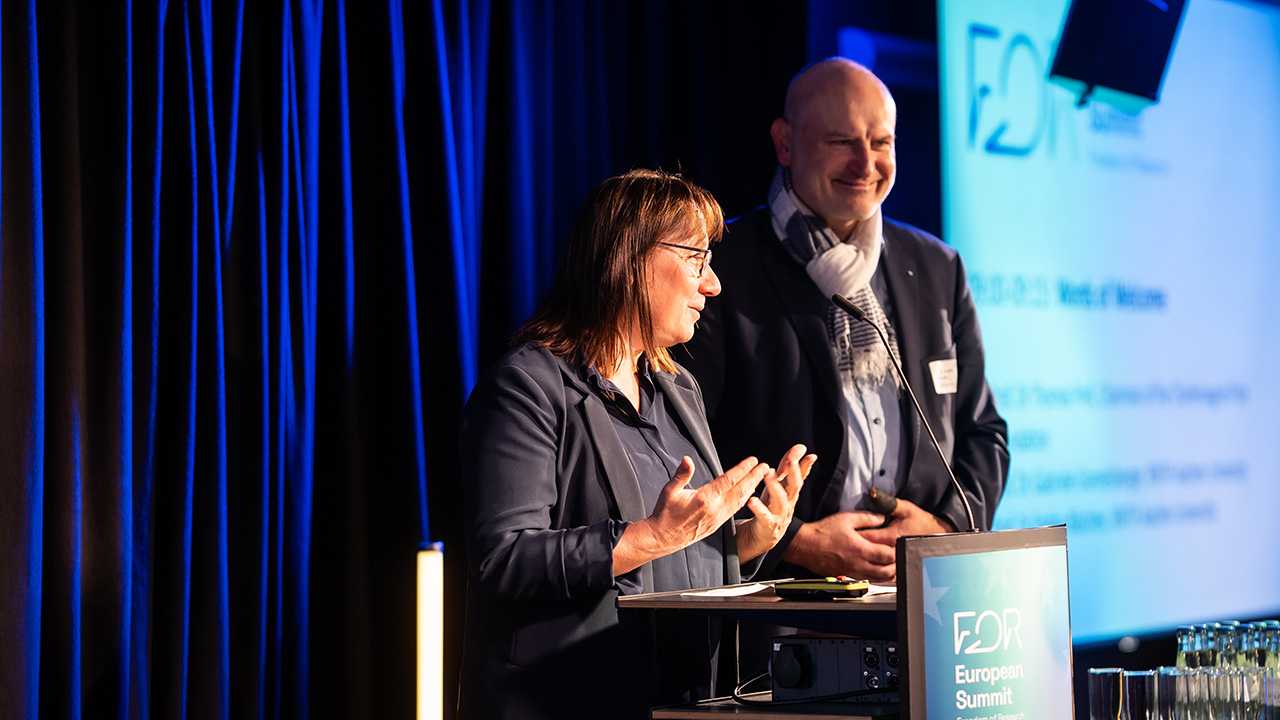
On November 5 and 6, 2025, the second edition of “Freedom of Research: A European Summit” will take place in Aachen. This year’s focus topic is “Europe in Times of Division.”
In an era of political tensions and division, academic freedom is under increasing pressure. How can Europe protect itself against threats to science, including disinformation, political interference, and social division? During the summit, we want to discuss ways to uphold shared values, safeguard scientific exchange, and strengthen trust in European institutions. We also aim to explore ways to foster academic freedom and democracy across Europe. Together with scholars, policymakers, and artists, we will address these questions through various formats. The event is jointly organized by the Charlemagne Prize Foundation, RWTH Aachen University’s Knowledge Hub, and c:o/re.
Before the start of the summit, the KHK c:o/re directors Gabriele Gramelsberger and Stefan Böschen discuss the urgent matter of academic freedom and share their expectations for the event in light of the challenges that educational institutions face.
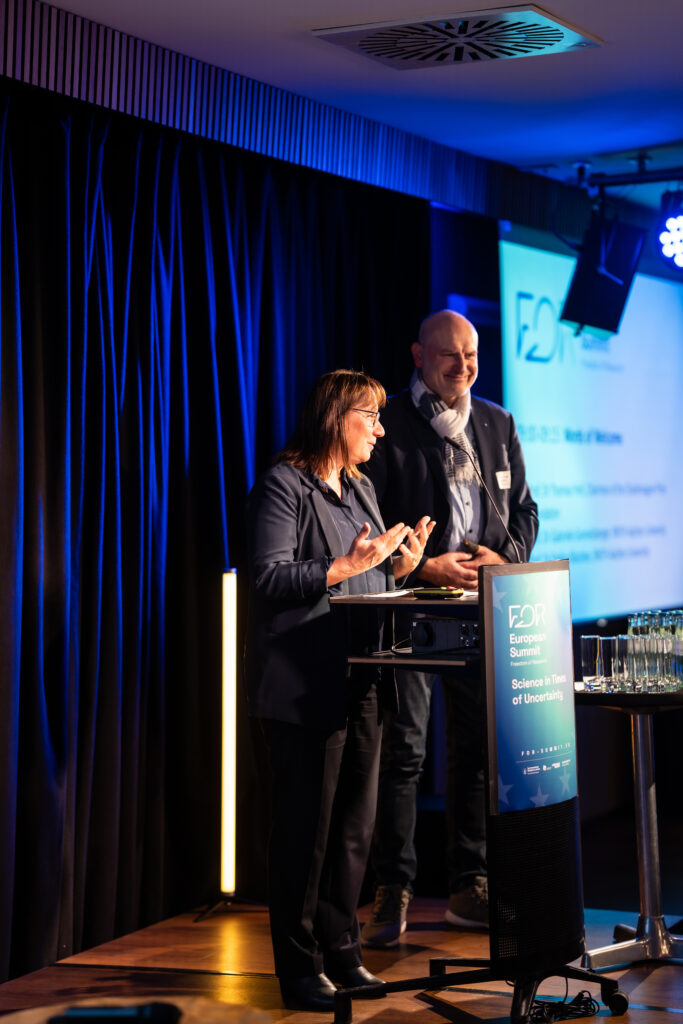
How do you view academic freedom in relation to c:o/re’s research interests?
The question of academic freedom acts as a seismograph for current processes of change in the production of scientific knowledge. Of course, we are initially confronted with right wing attacks on the institution of universities. But this should not distract us from the more hidden forms of restriction on freedom of research, such as the forced commercialization of research or the digitalization of research and its side-effects on freedom of research. We examine the varieties of these threats as changes in cultures of research.
How would you classify the freedom of research and science in Germany and Europe?
At the moment, the situation in Germany is still basically good, although we must remain alert here too. However, we are already observing significant restrictions in various European countries (think of Hungary). Budget problems are also intensifying in Germany, and since the higher education system is organized across the German federal states and the austerity measures are poorly synchronized, this could lead to more or less significant upheavals. To put it pointedly, this may raise the question of which disciplines will continue to be protected and which will be deemed expendable.
What dangers do you see, and which developments do you consider dangerous?
Academic freedom can be restricted by a wide variety of political interventions. It is precisely the diversity of possible points of intervention that leads to a lack of clarity regarding the potential threats to academic freedom. This is what makes the current situation particularly dangerous, because it increases the likelihood that influences that may later prove decisive will not be recognized at the moment when the decisions are taken.
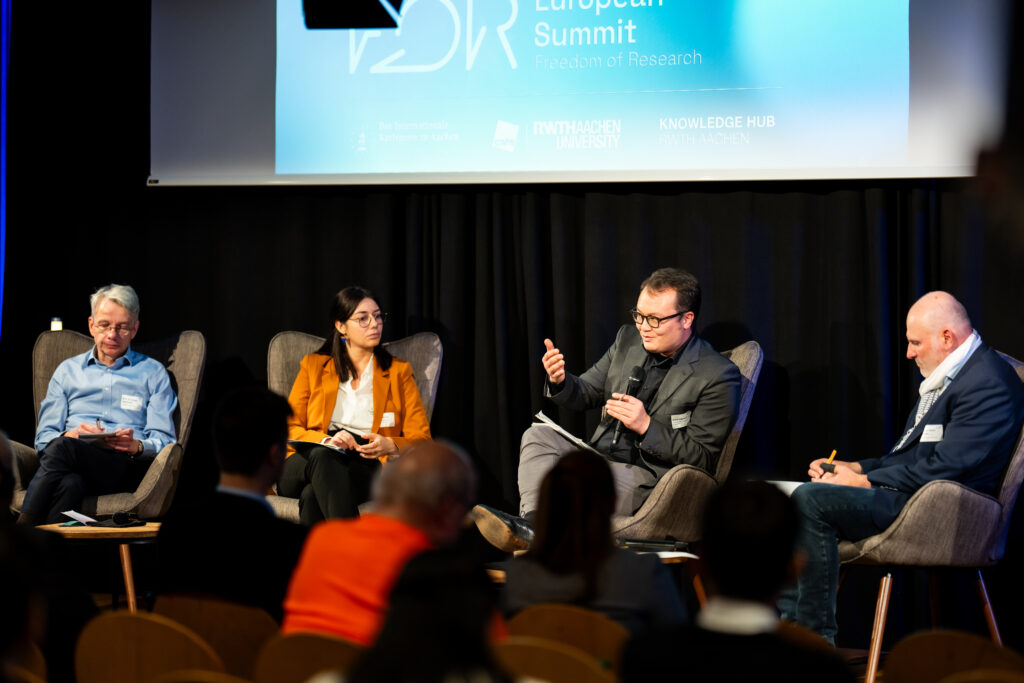
How can science protect itself from targeted disinformation and political influence?
On the one hand, this question is easy to answer because scientific independence still applies for many scientific endeavors. However, this independence is already coming under pressure because, for reasons that are initially understandable, such as the need for science to be relevant, research is oriented toward specific goals and is therefore restricted. The boundaries here are sometimes very fluid. And this is precisely what makes the issue so problematic.
In times of division, how can common values be preserved, scientific exchange secured, and trust in European institutions strengthened?
Open dialogue is the only way to achieve political goals and decisions. Isolation, exclusion, and radicalization of debates are the wrong approach. Freedom requires respect and mutual recognition. Furthermore, European values such as freedom, democracy, access to education, human-centered politics have to be protected against attacks. This is also a task of institution-building respectively their further development.
How can divisions be overcome and bridges be built within and outside academia, between social groups, and between politics and science?
This is a very complex question. That is why it may be worth considering only one seemingly paradoxical point. With Executive Order 13985, the Biden administration sought to strengthen diversity in universities. This led to the establishment of strong diversity units at universities and restricted the meritocratic principle of science. It also gave Trump a very welcome opportunity to intervene even more deeply in academic freedom in order to reverse this policy. When considering protective measures, one should always consider the possible undesirable consequences.
What are your hopes for the summit?
This time, we are hoping for two things in particular. First, we would like to gain insights that will enable us to better assess where and why academic freedom is under particular pressure. Second, we hope that a comparative perspective across different regions of the world will teach us something about the respective cultural and institutional conditions that shape freedom of research.
What is the KHK’s interest in the joint event with the Charlemagne Prize Foundation and the Knowledge Hub?
This cooperation provides an outstanding opportunity to create a space for reflection on these issues, in which very different actors can engage in dialogue. And in view of the Charlemagne Prize Foundation’s guiding principle of promoting the idea of Europe as an open and liberal society, it is crucial to focus on this important institution for the development of democracies. If we want to continue to develop Europe democratically, then it must be the concern of all responsible actors and citizens to work to safeguard freedom of research and to explore appropriate ways of doing so together.

For more details, including a list of speakers and the full program, please visit the event website.
To register, please follow this link.
To get an idea of what the last summit was like, take a look at this and this blog posts.
Photo Credits: Christian van’t Hoen

